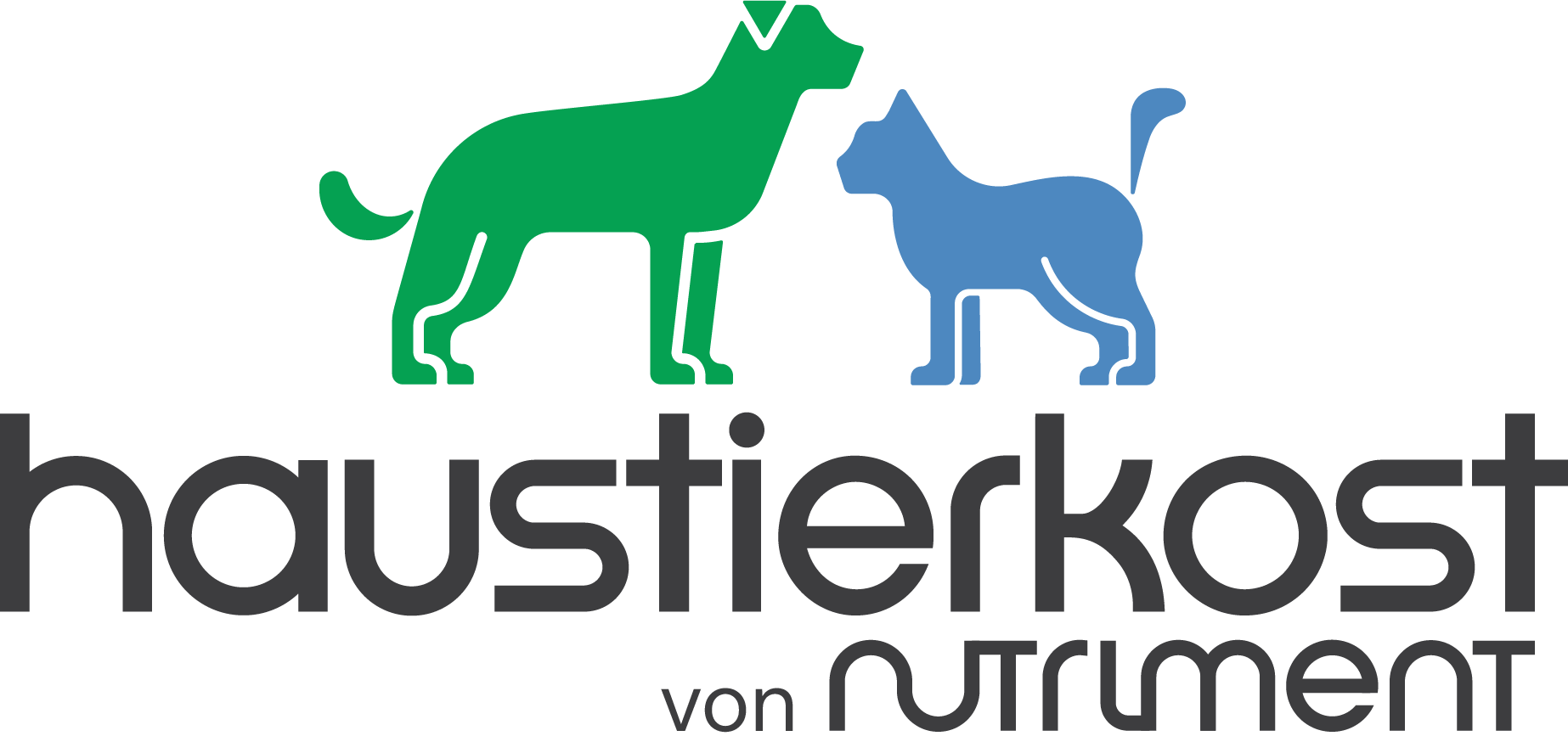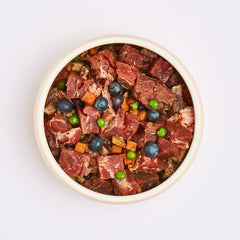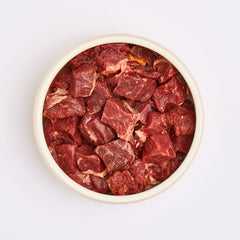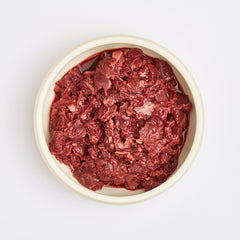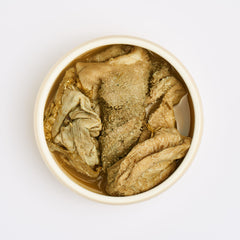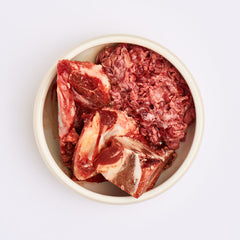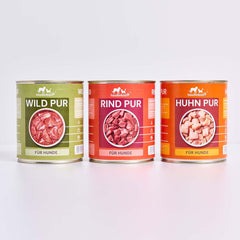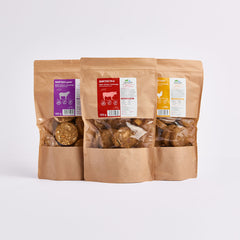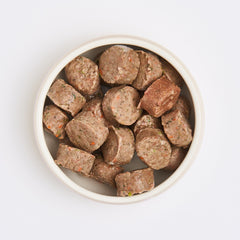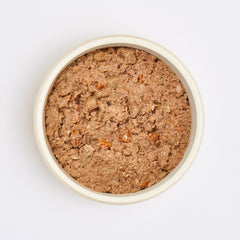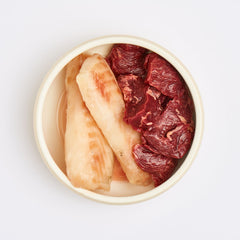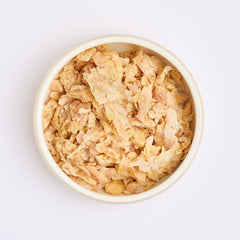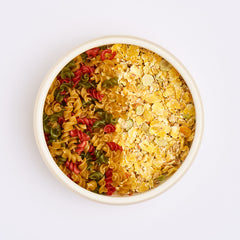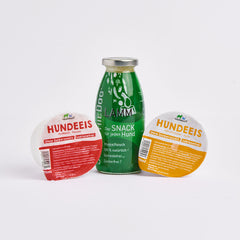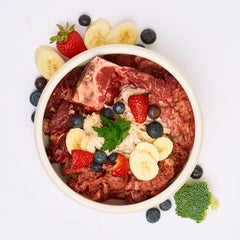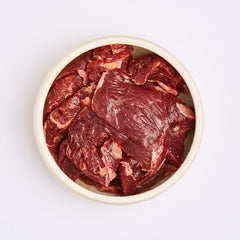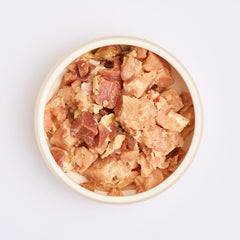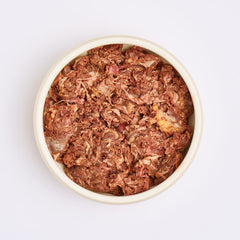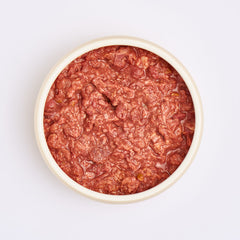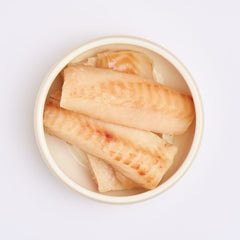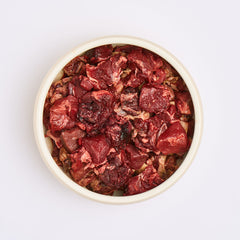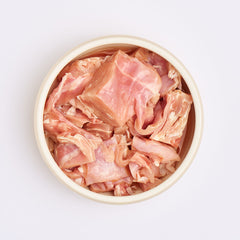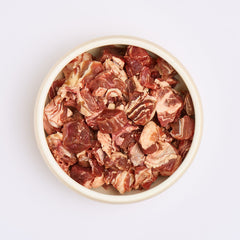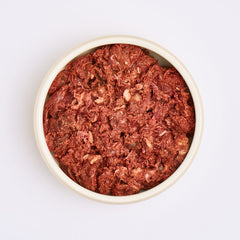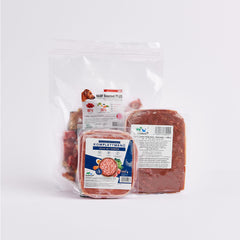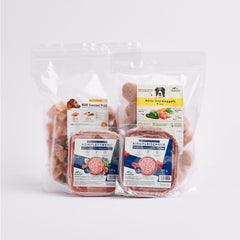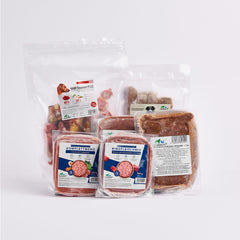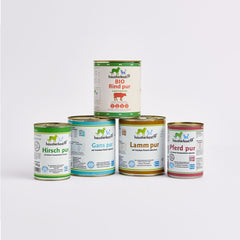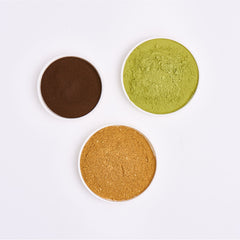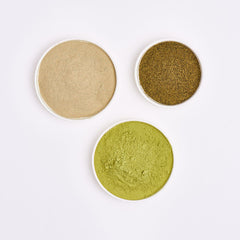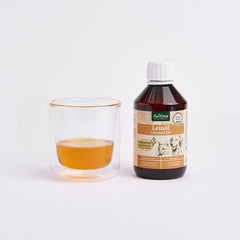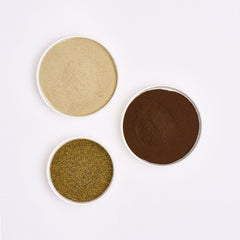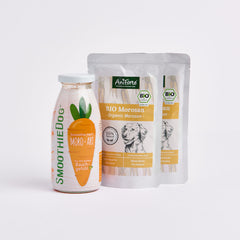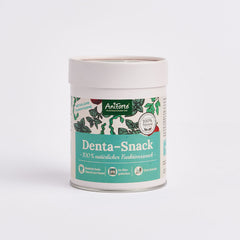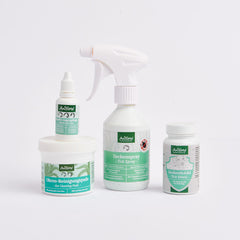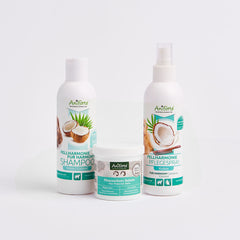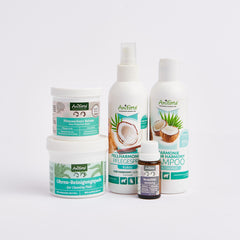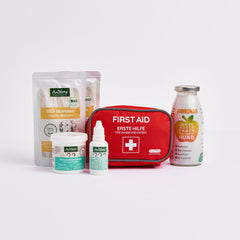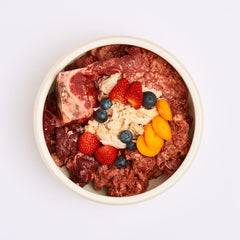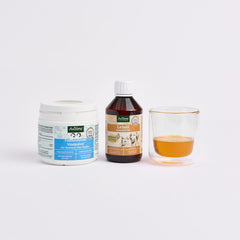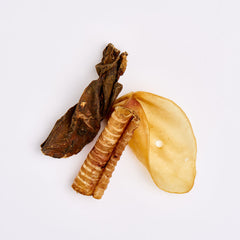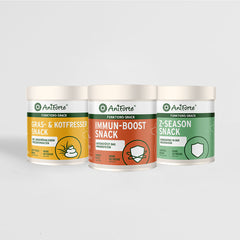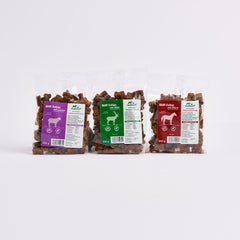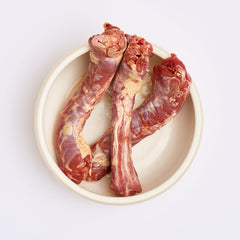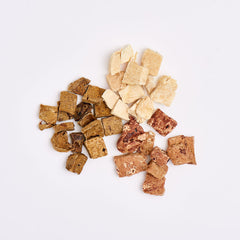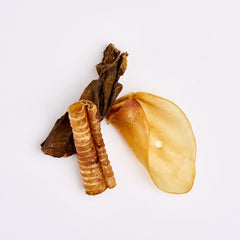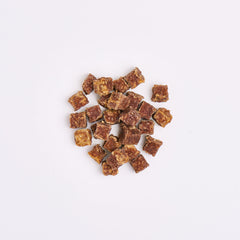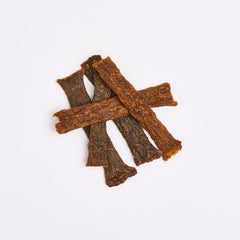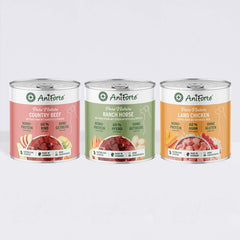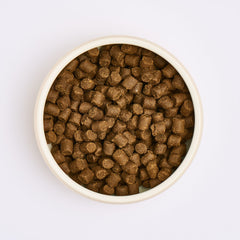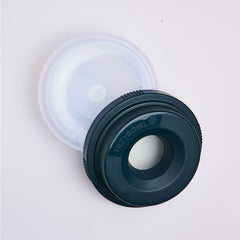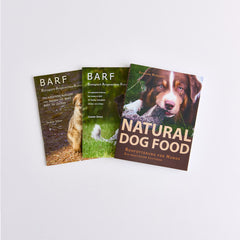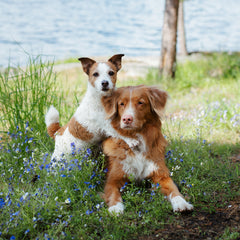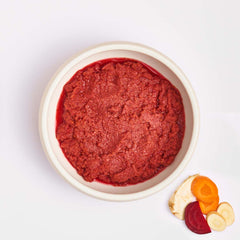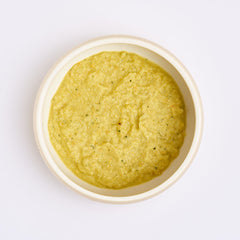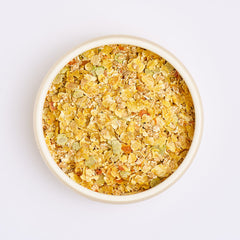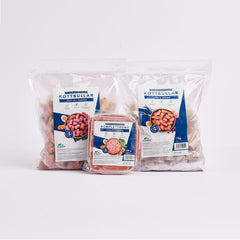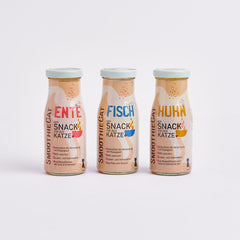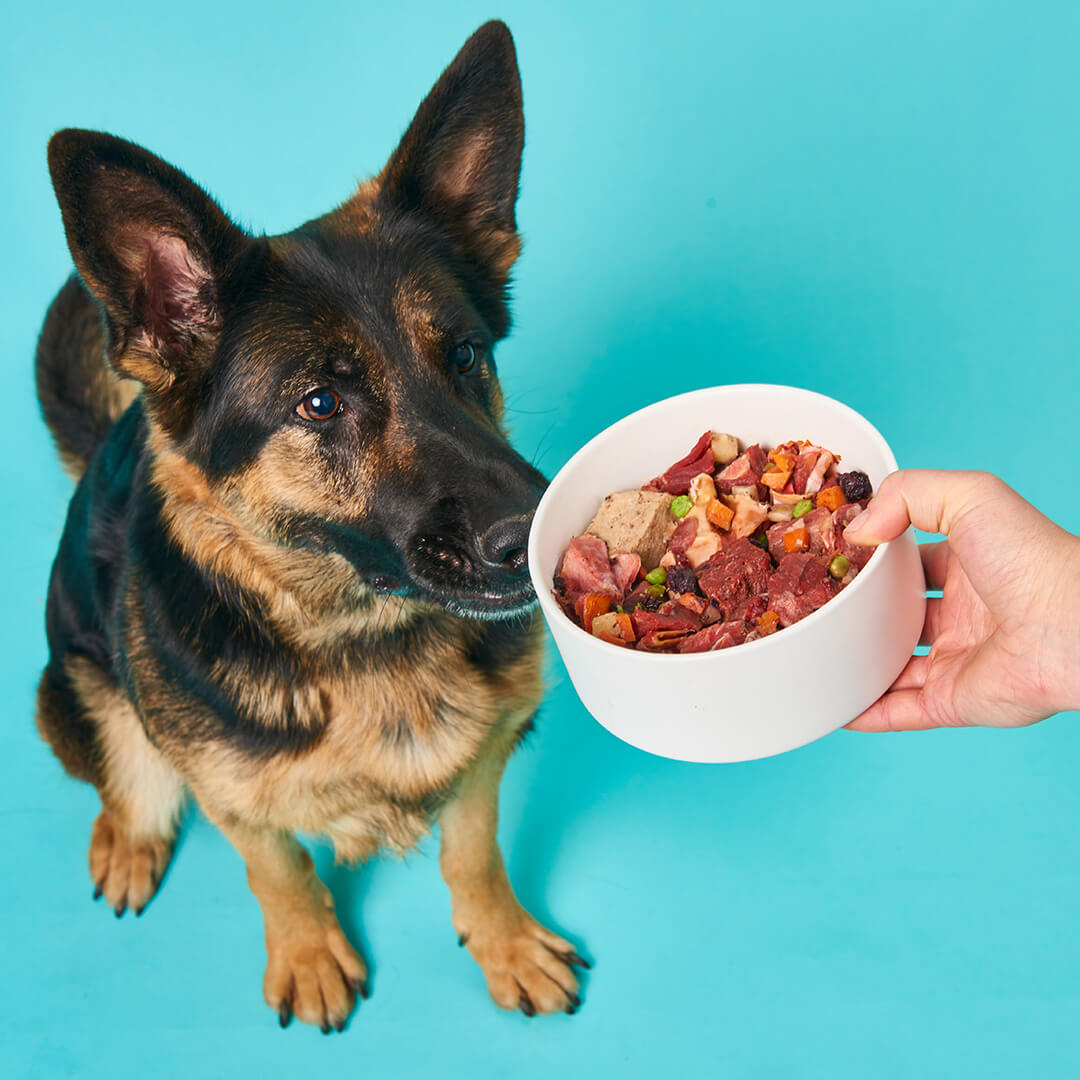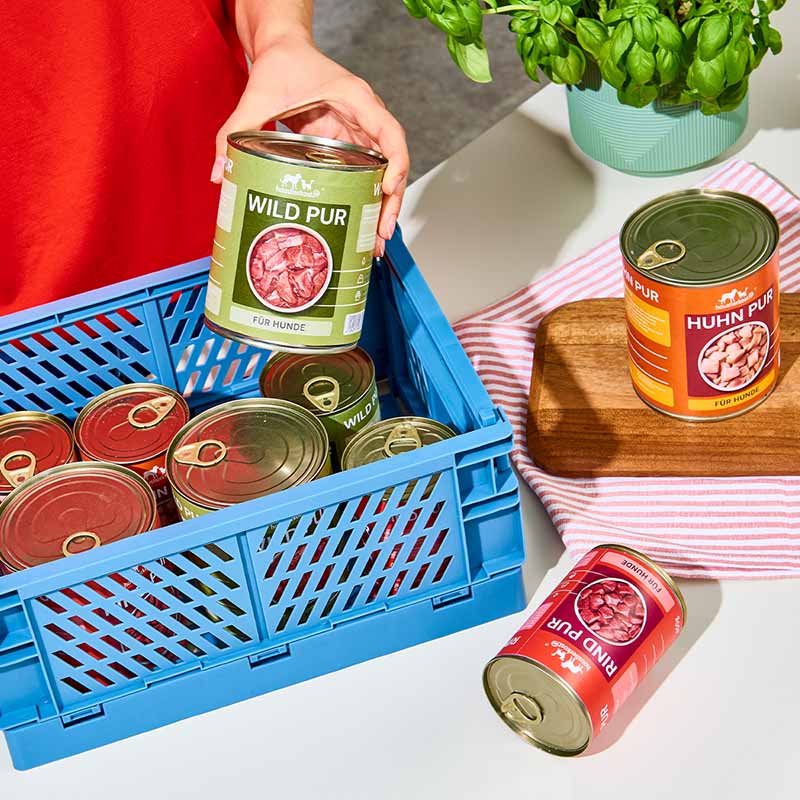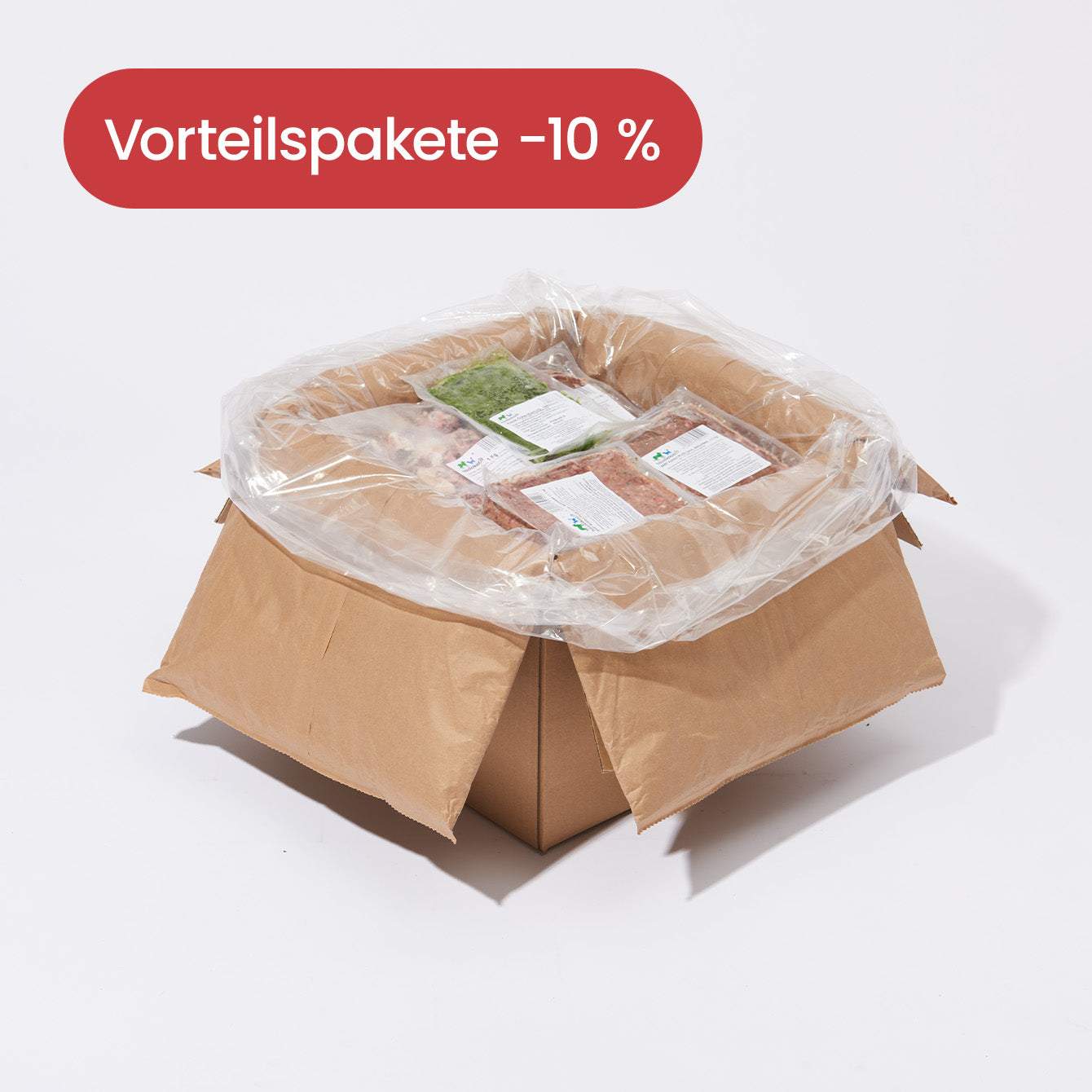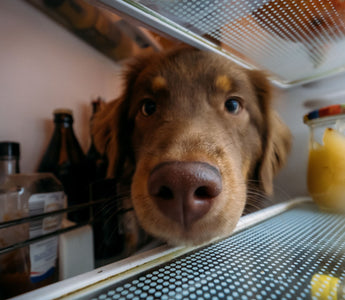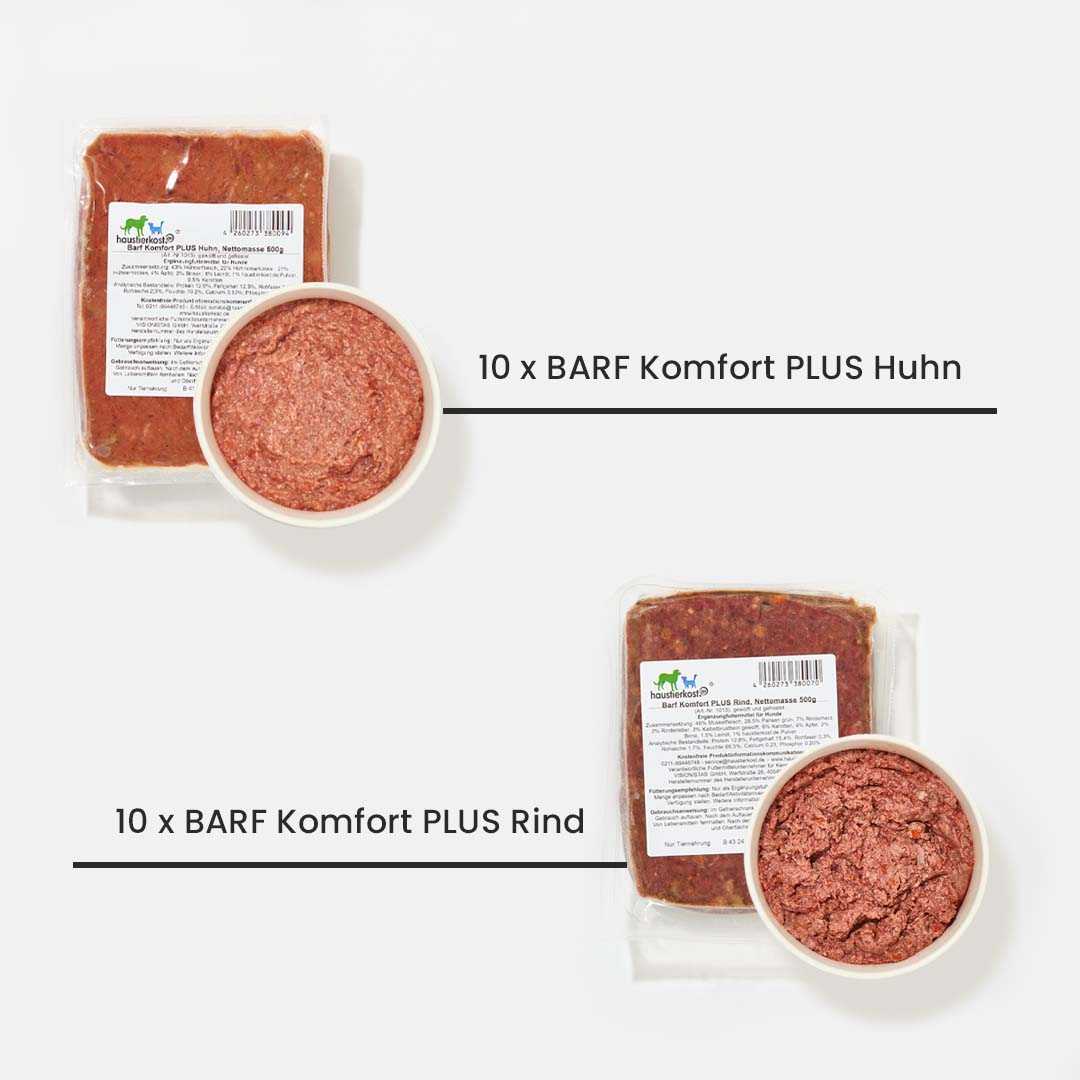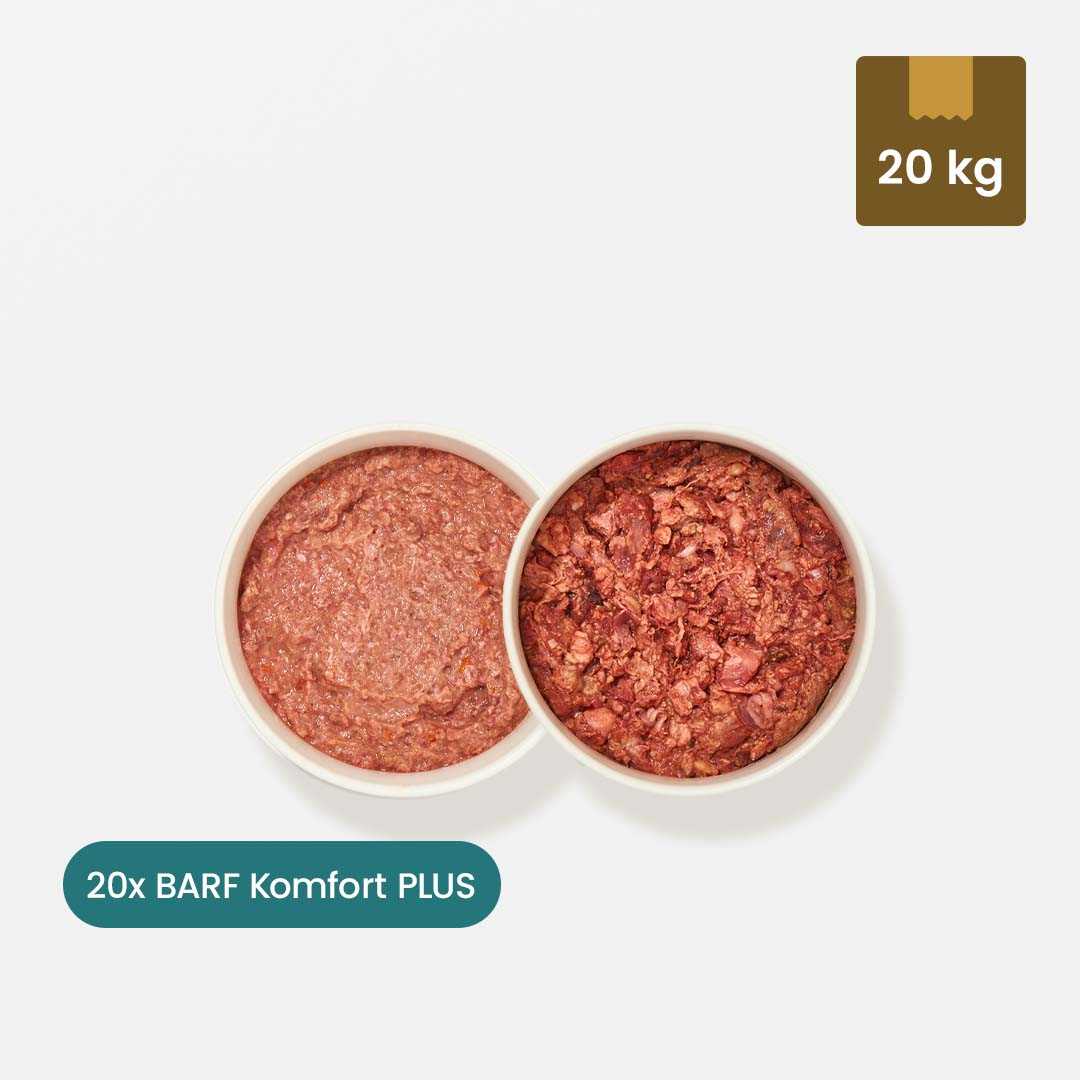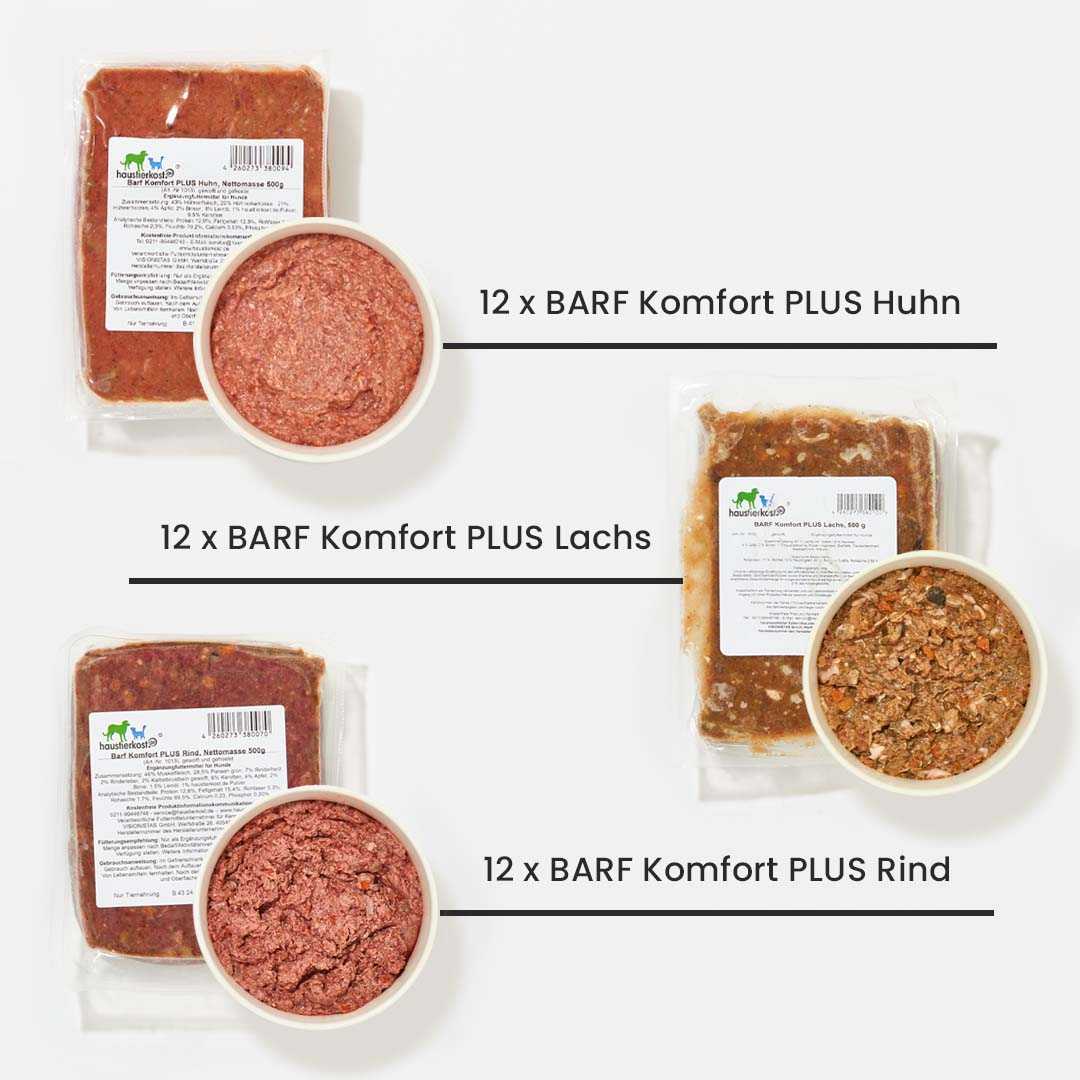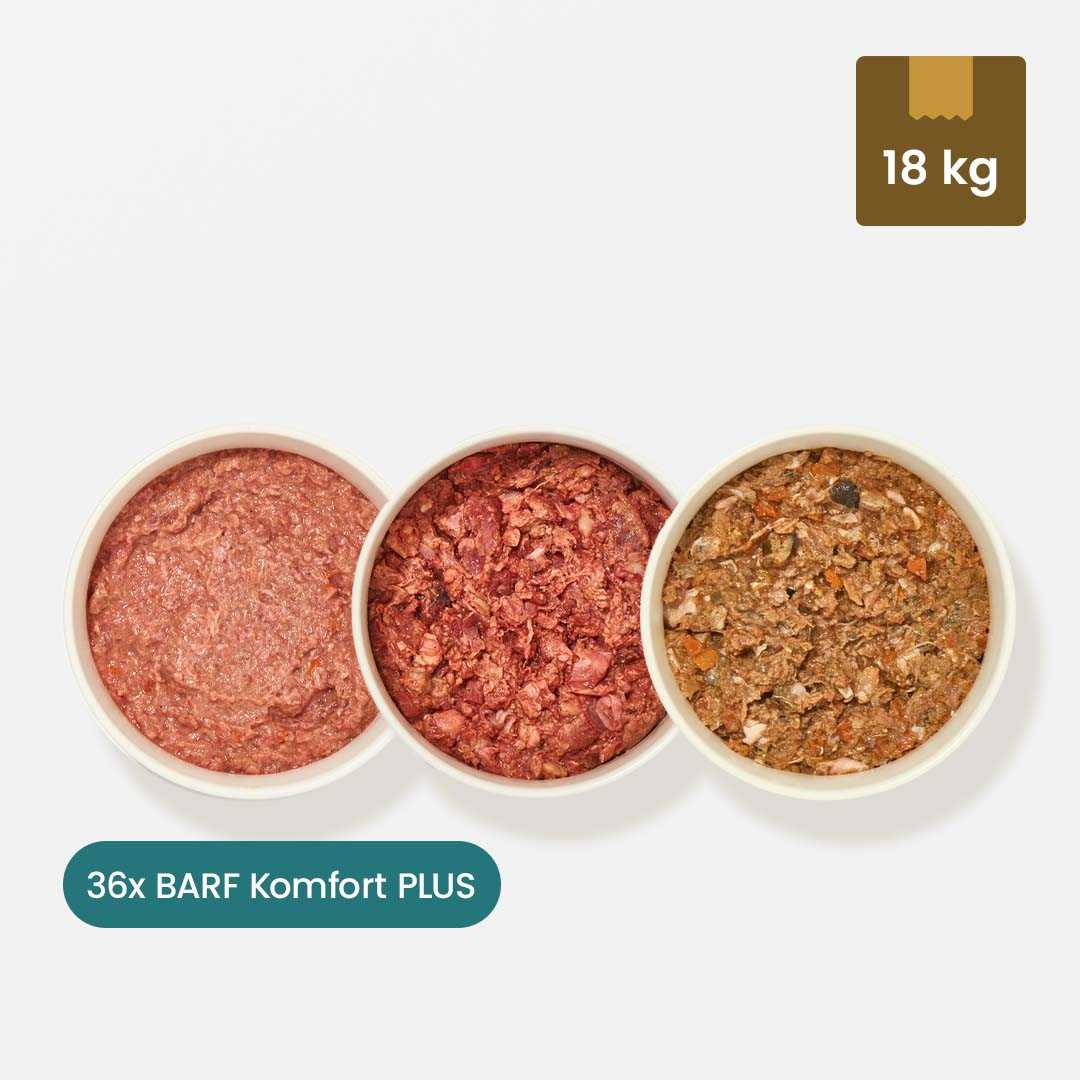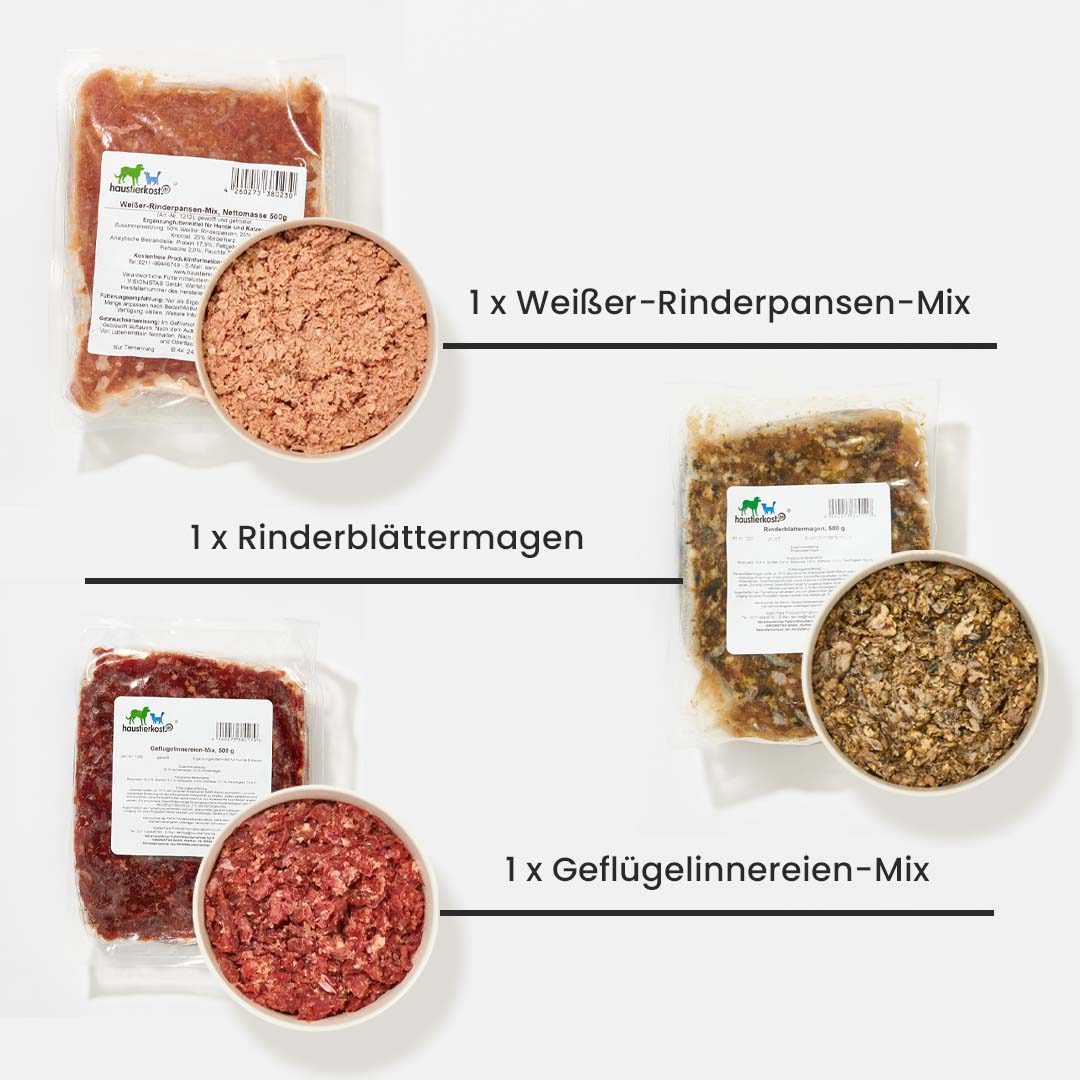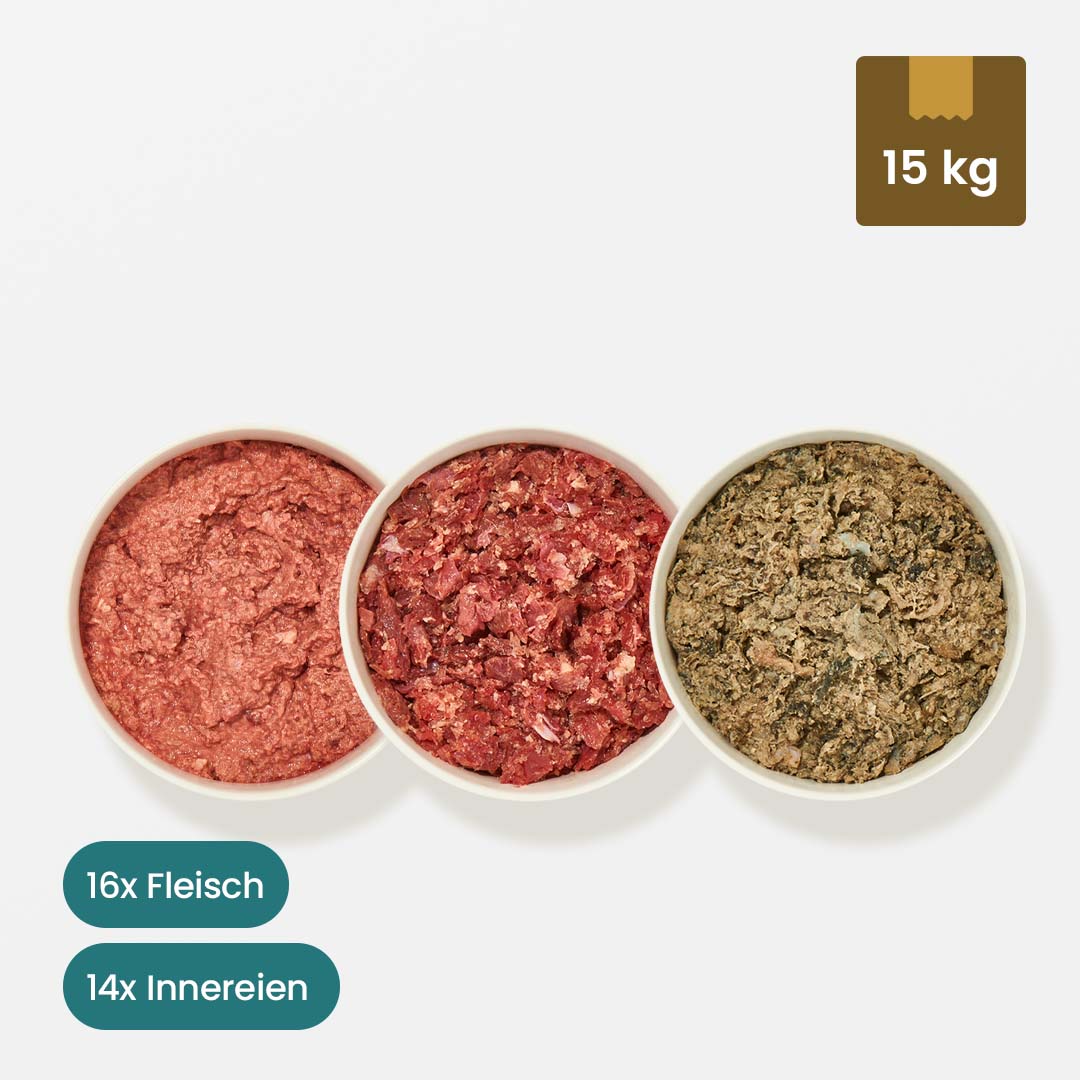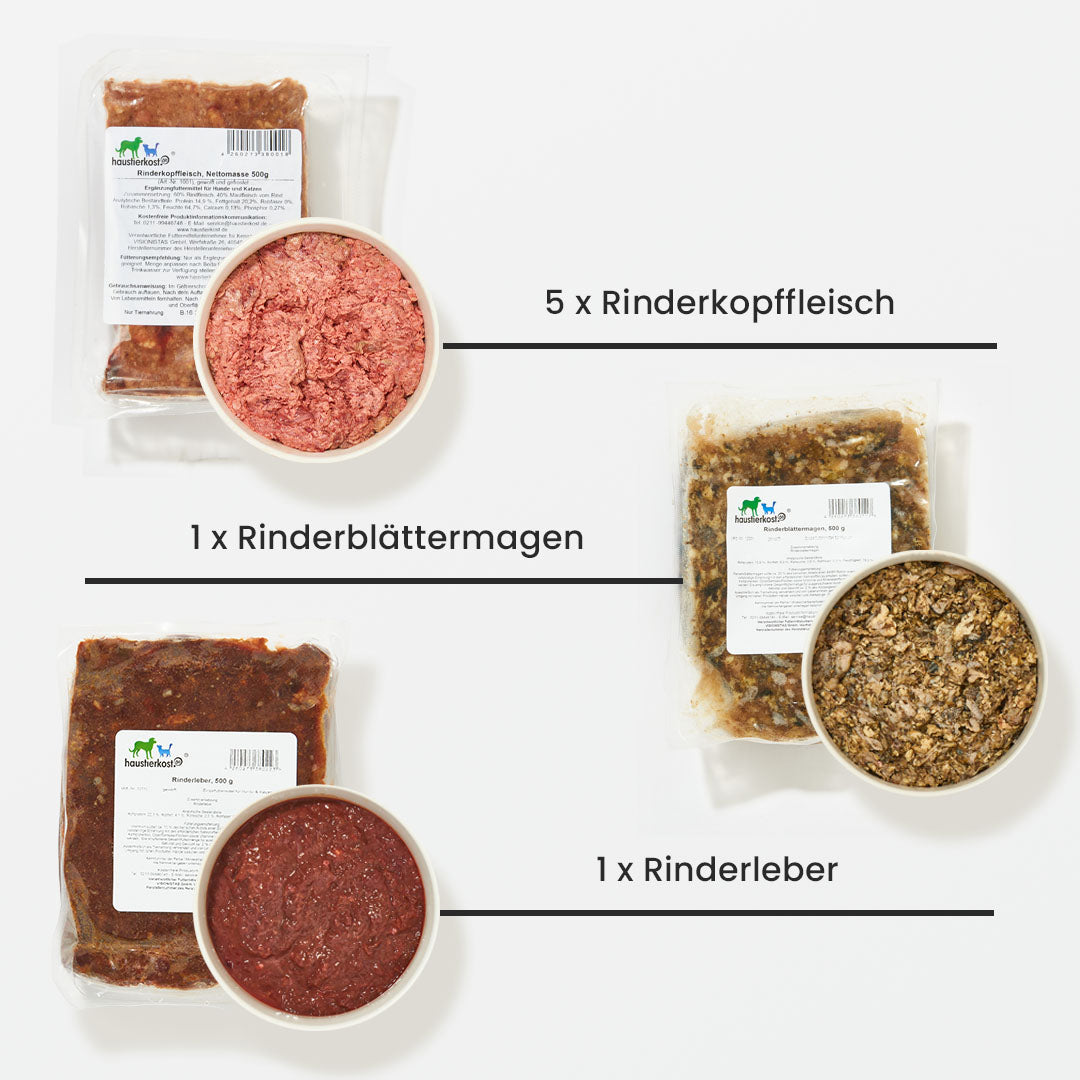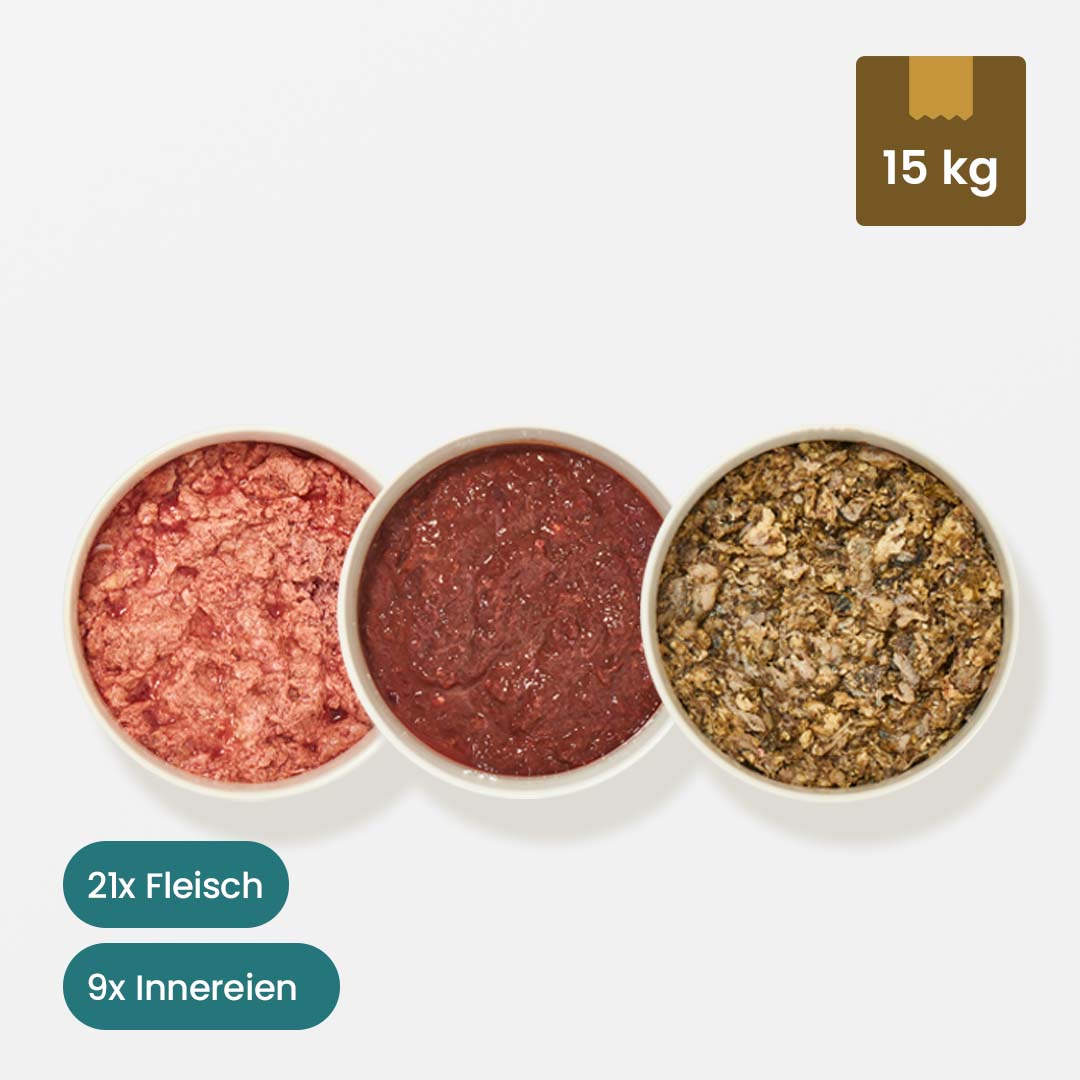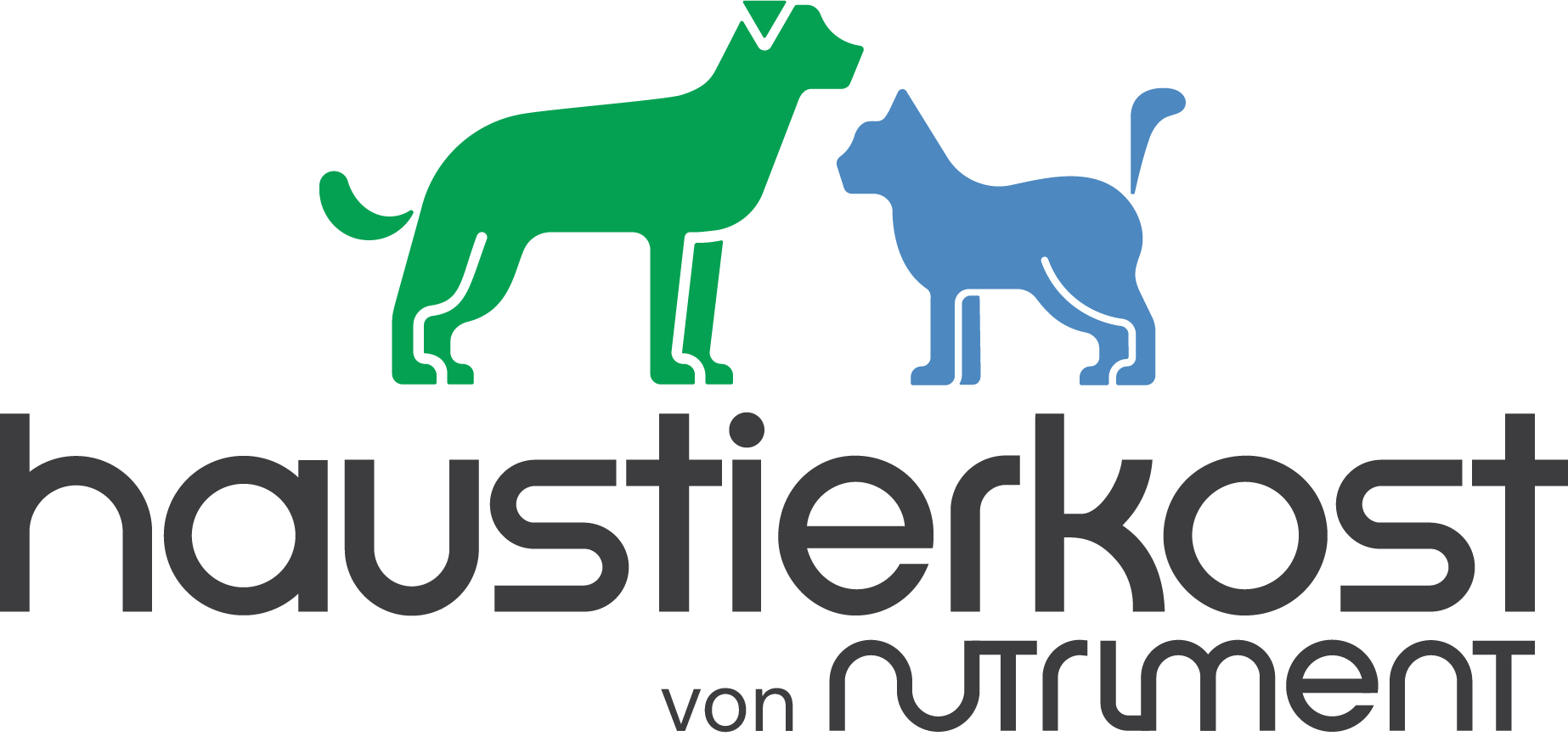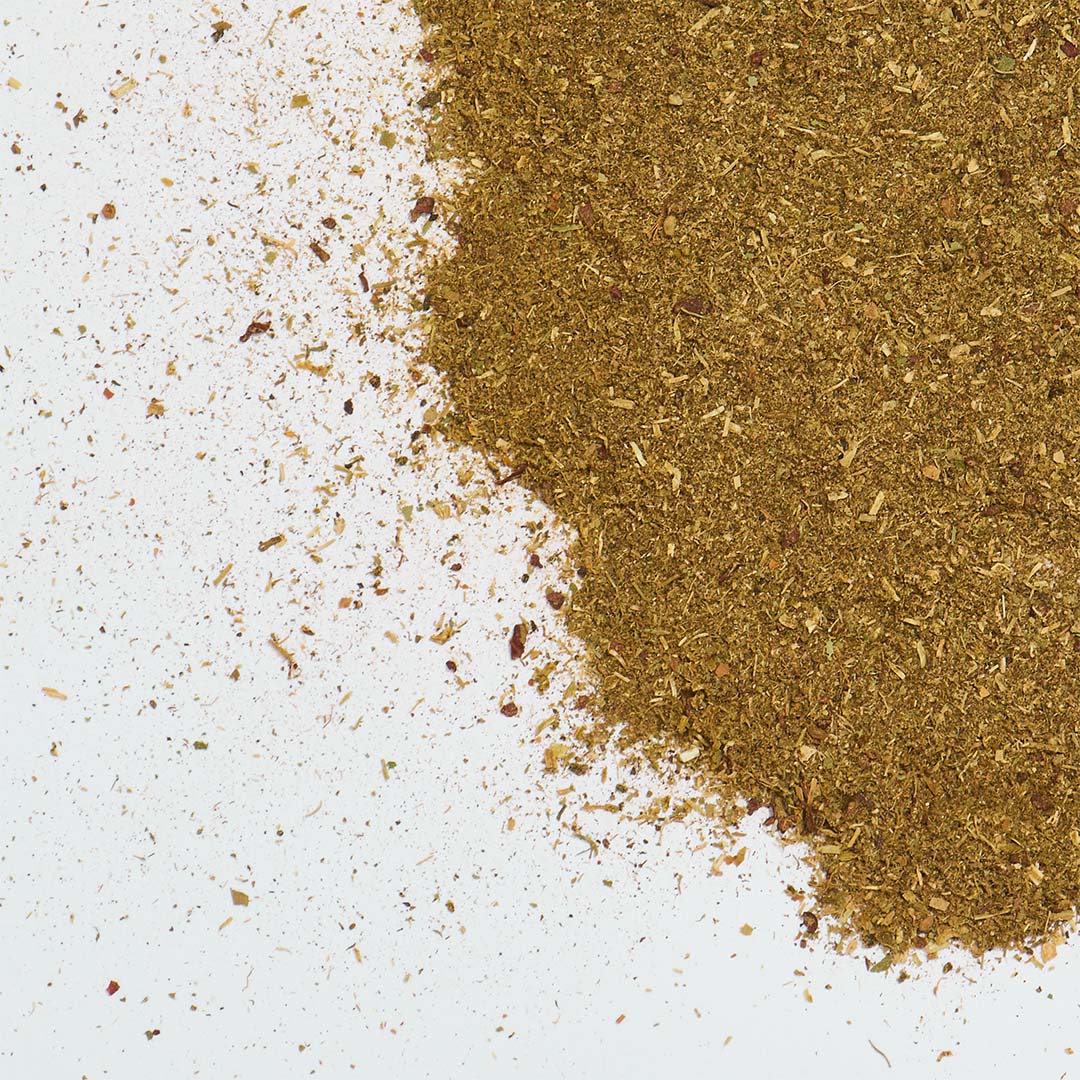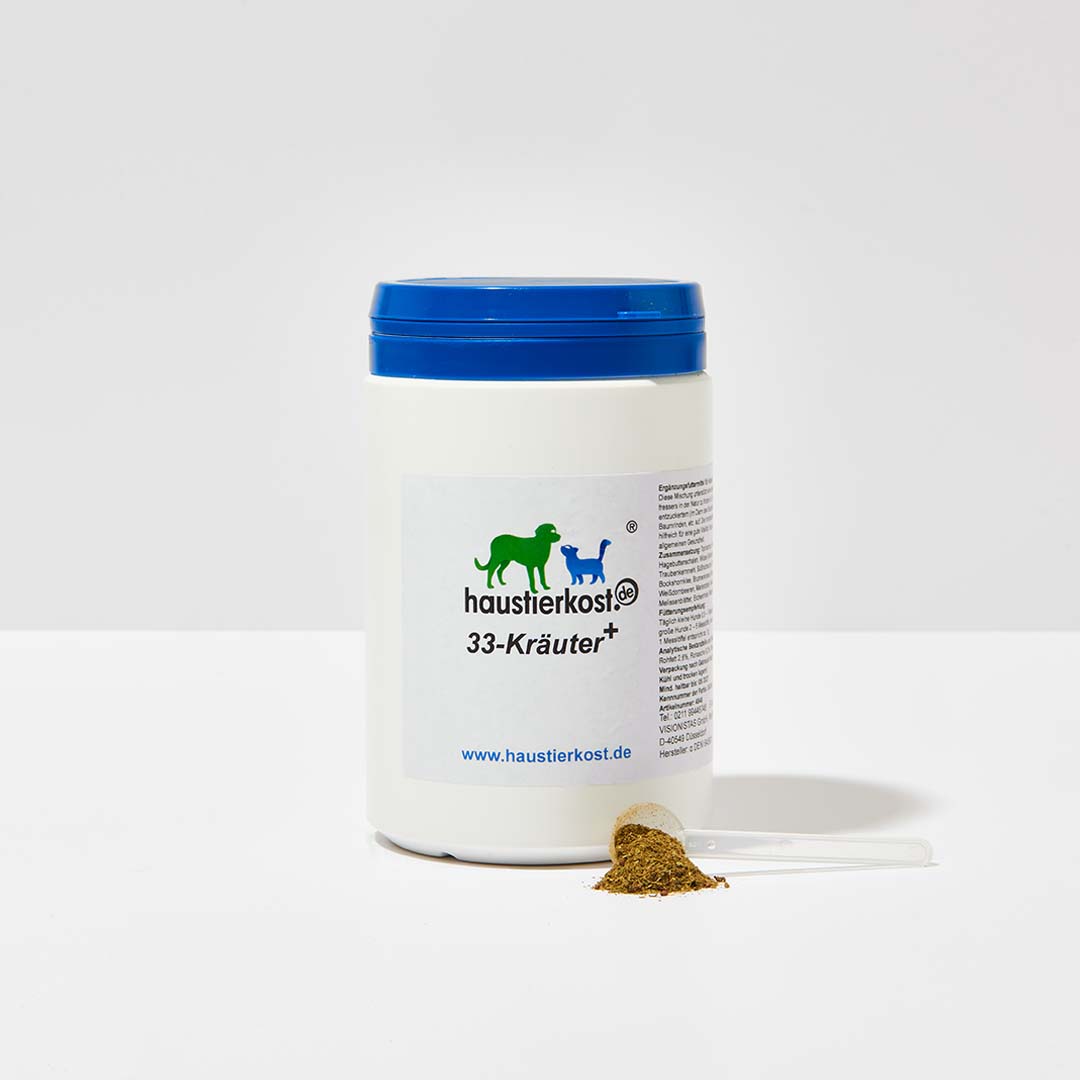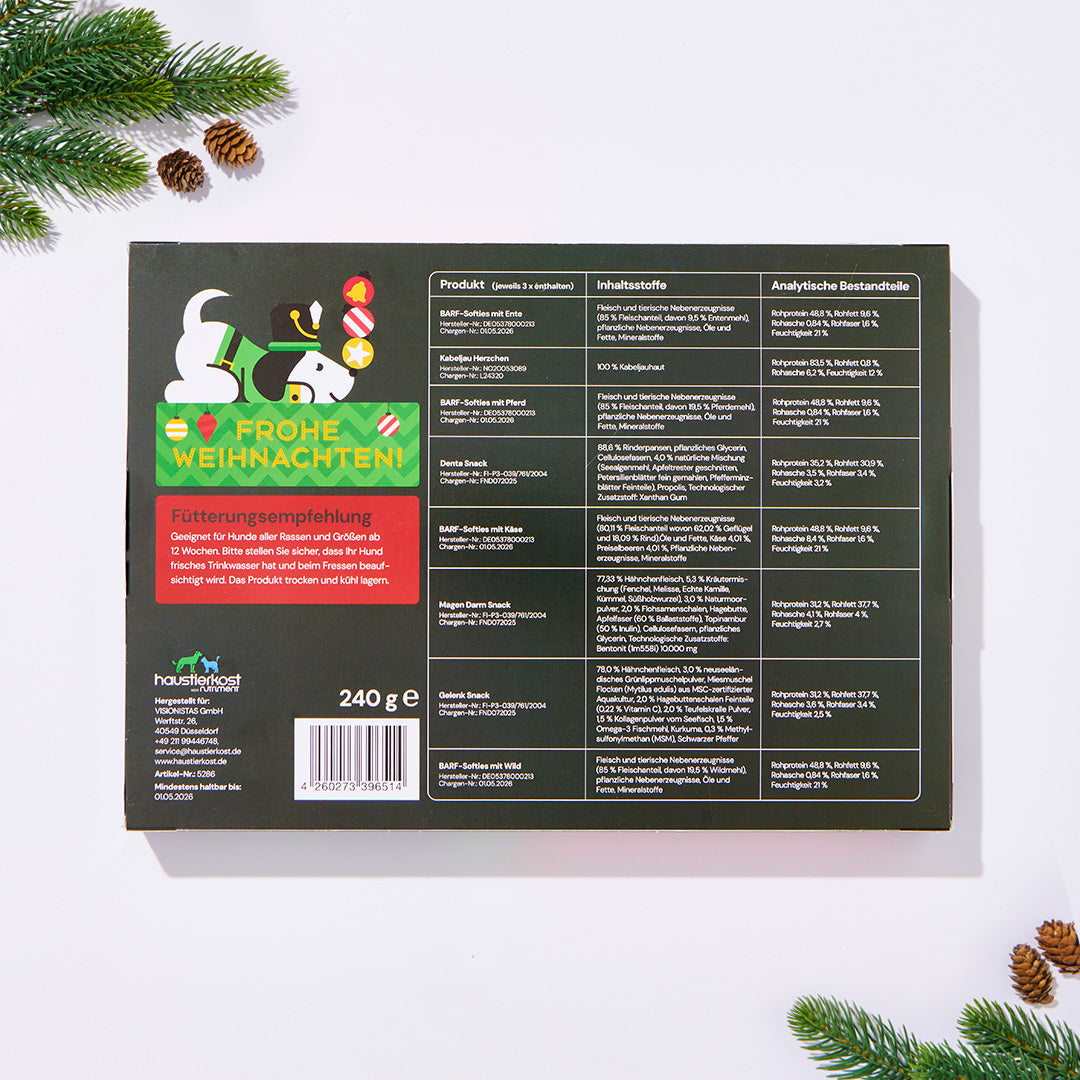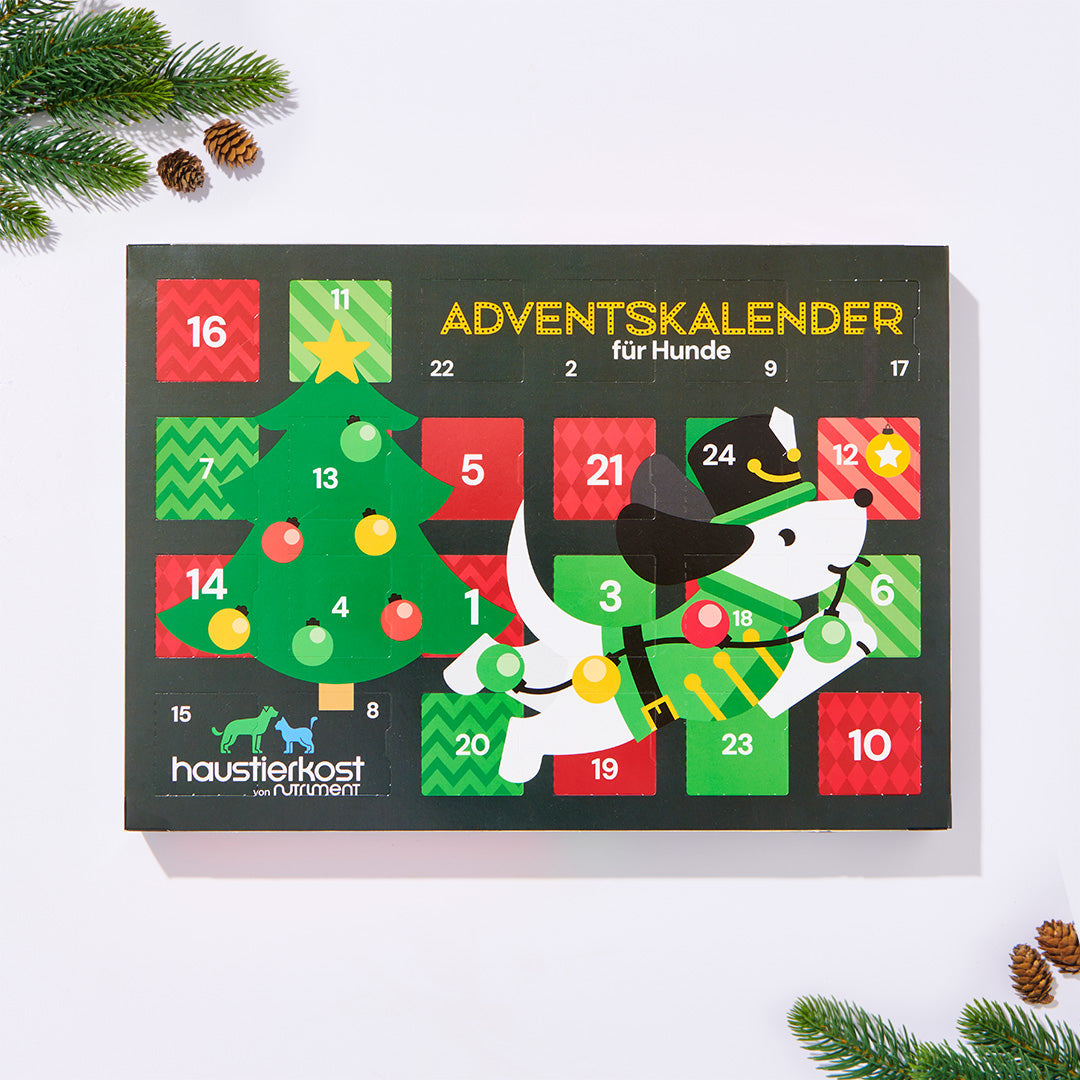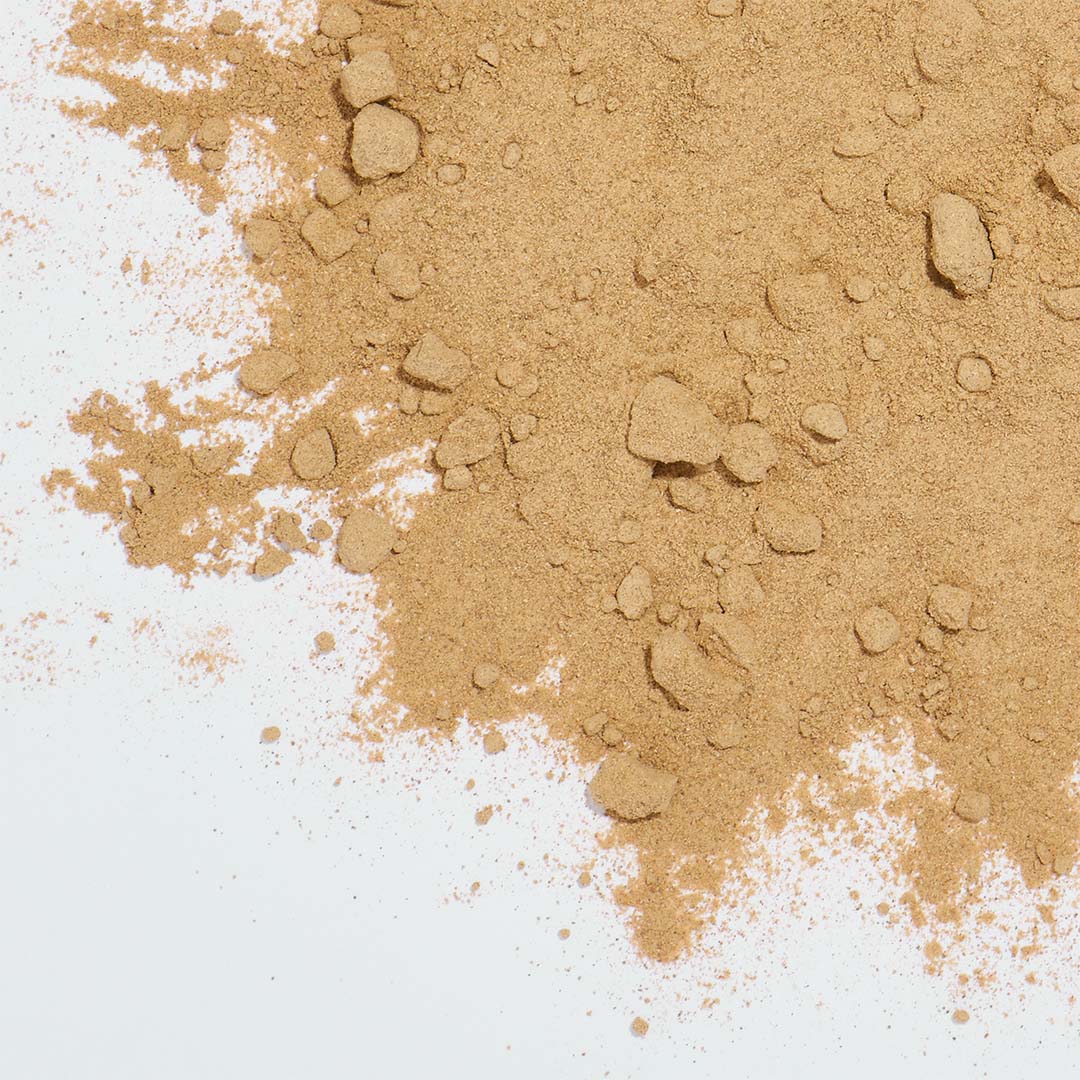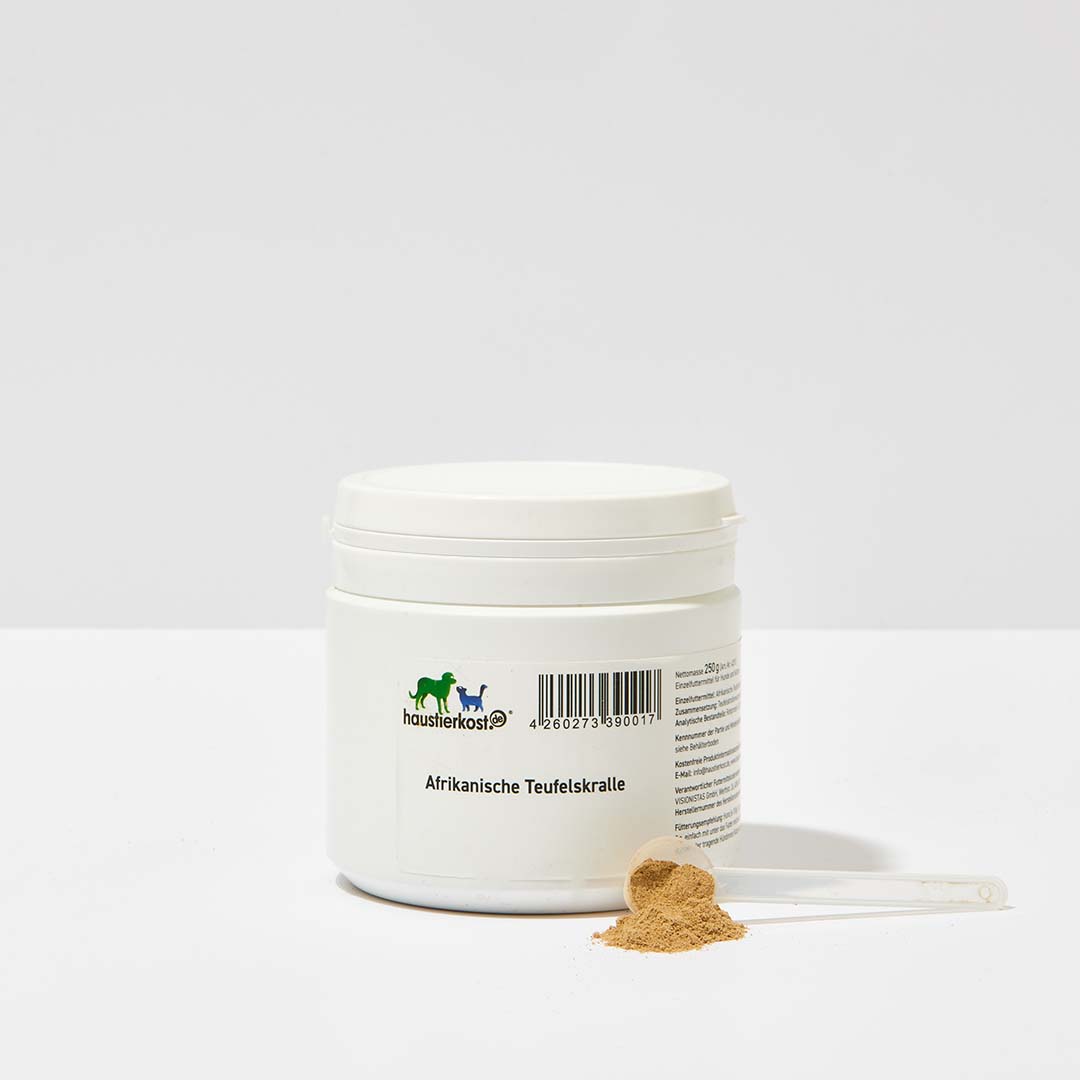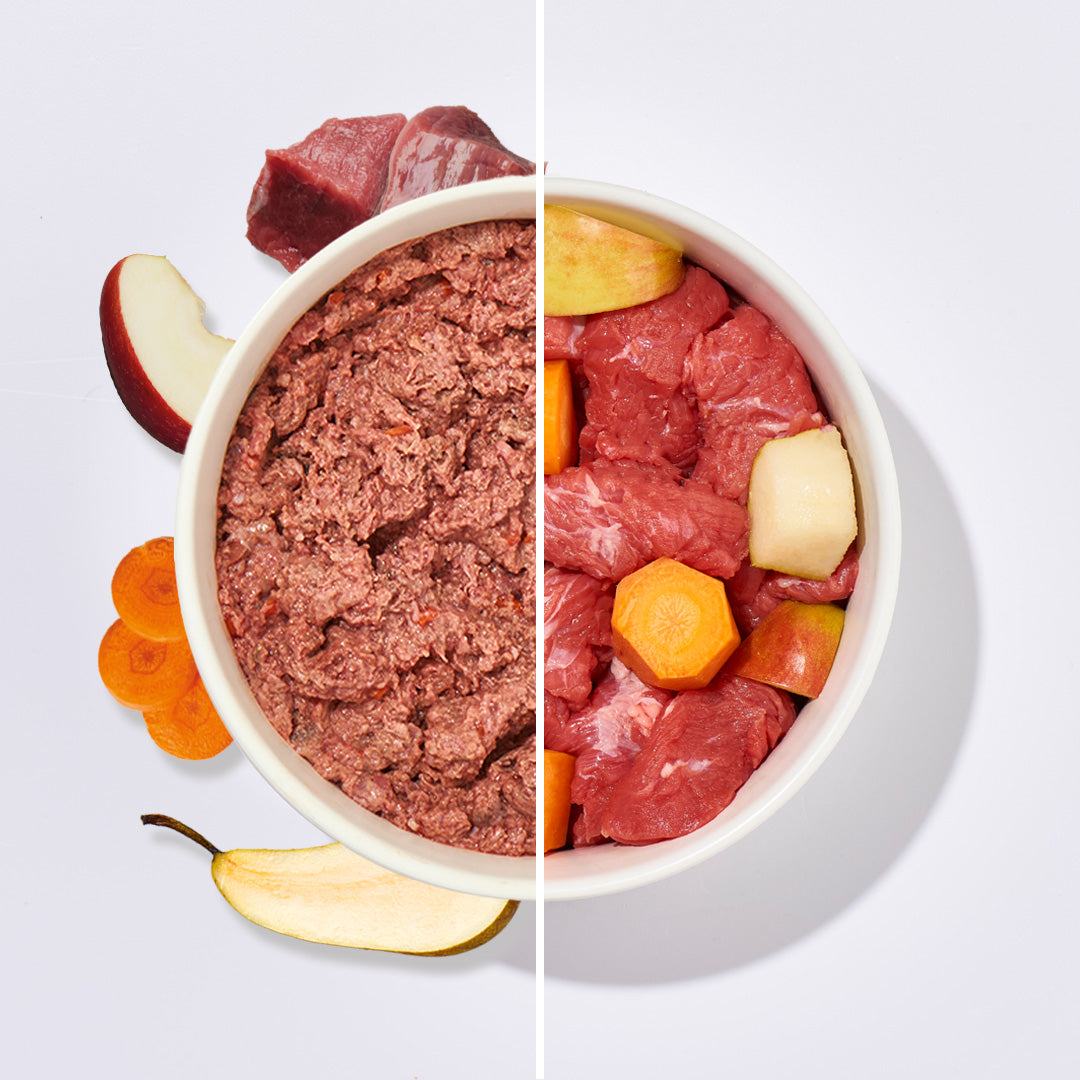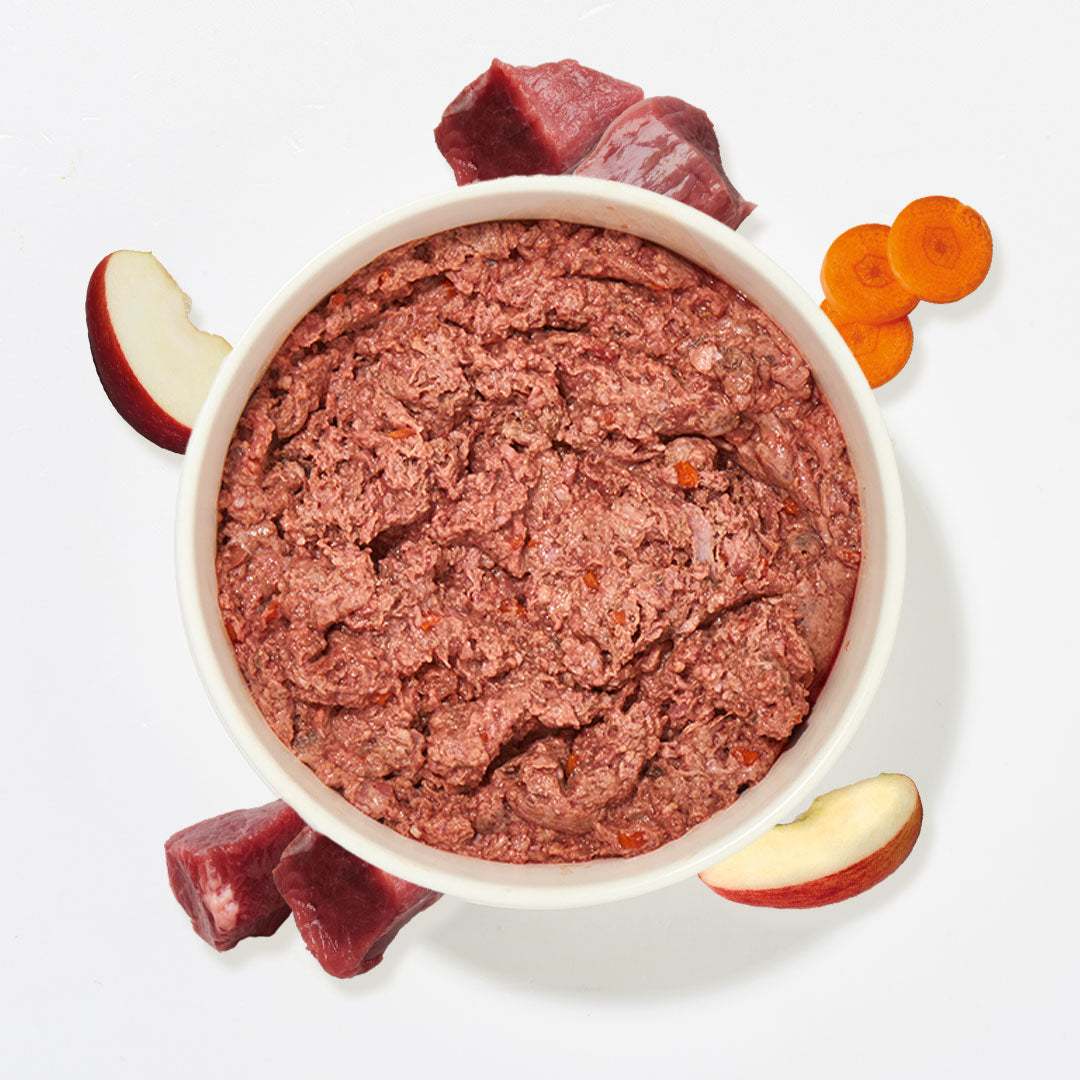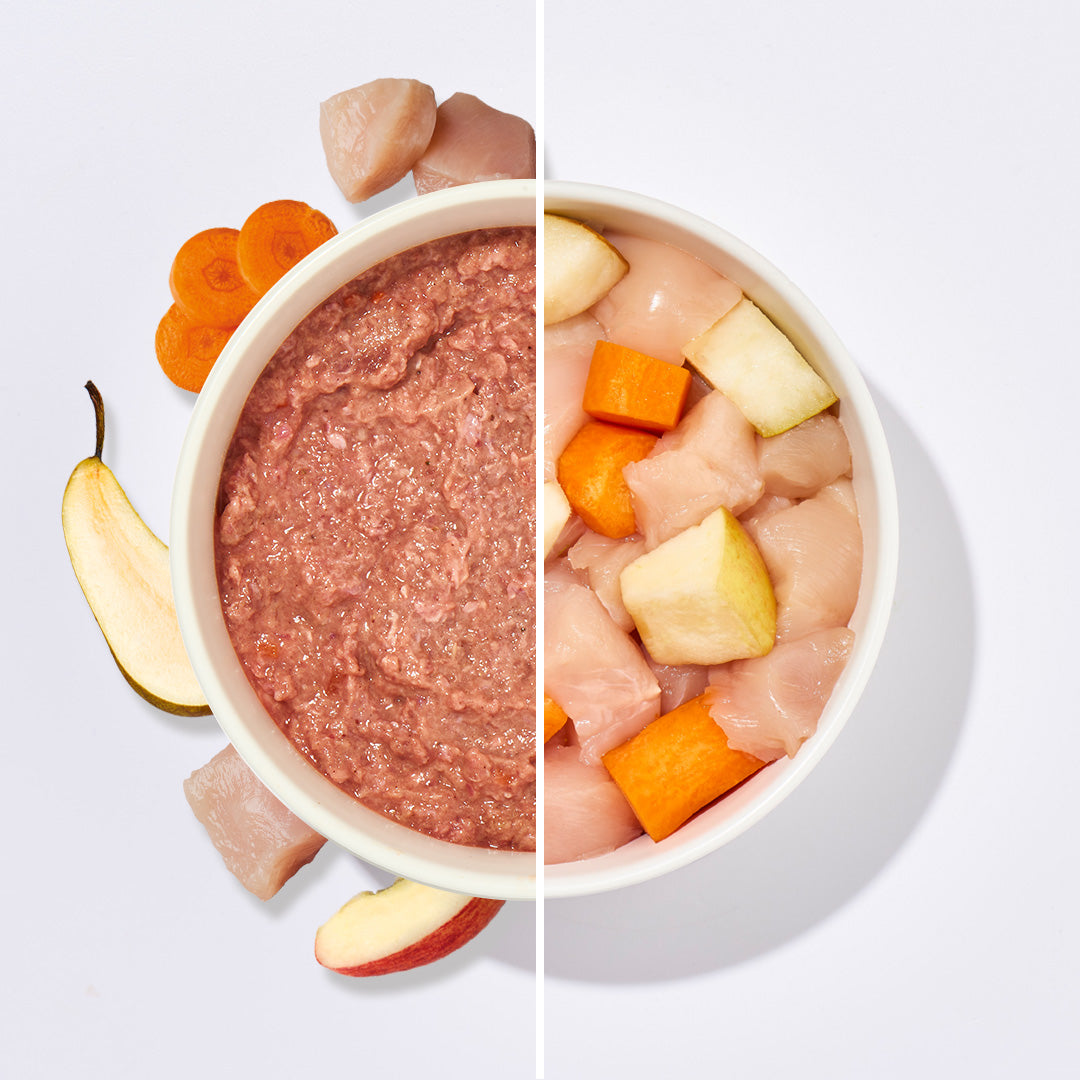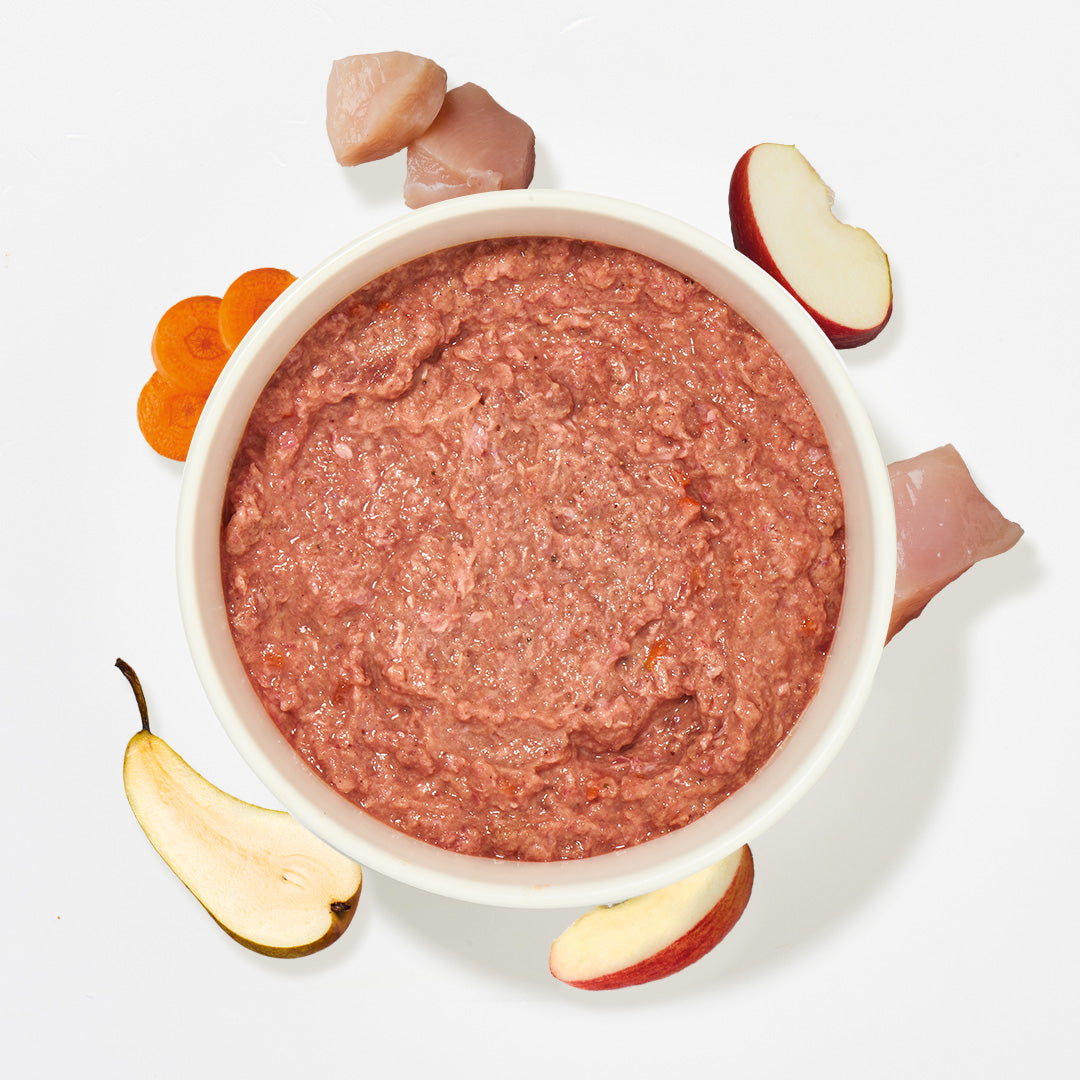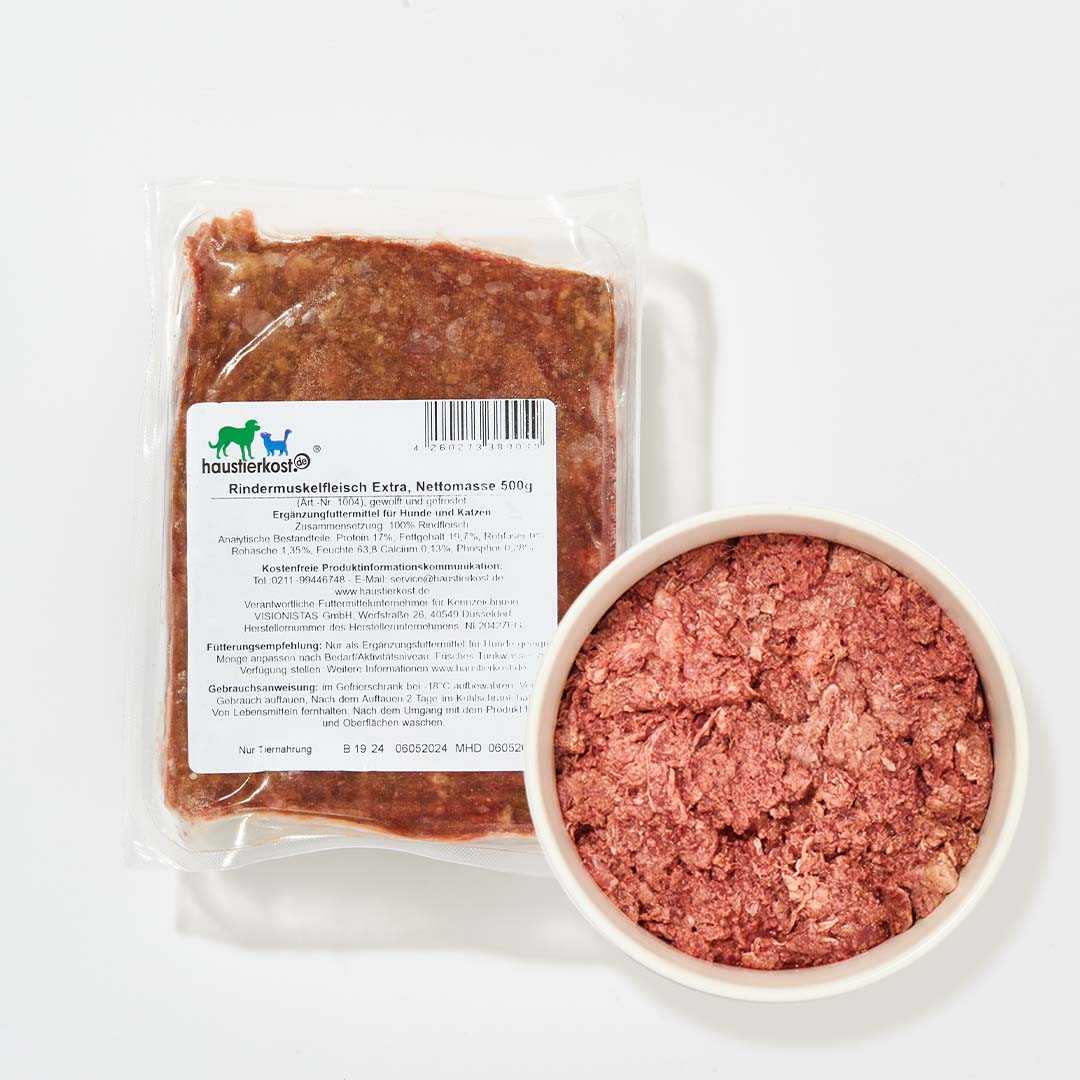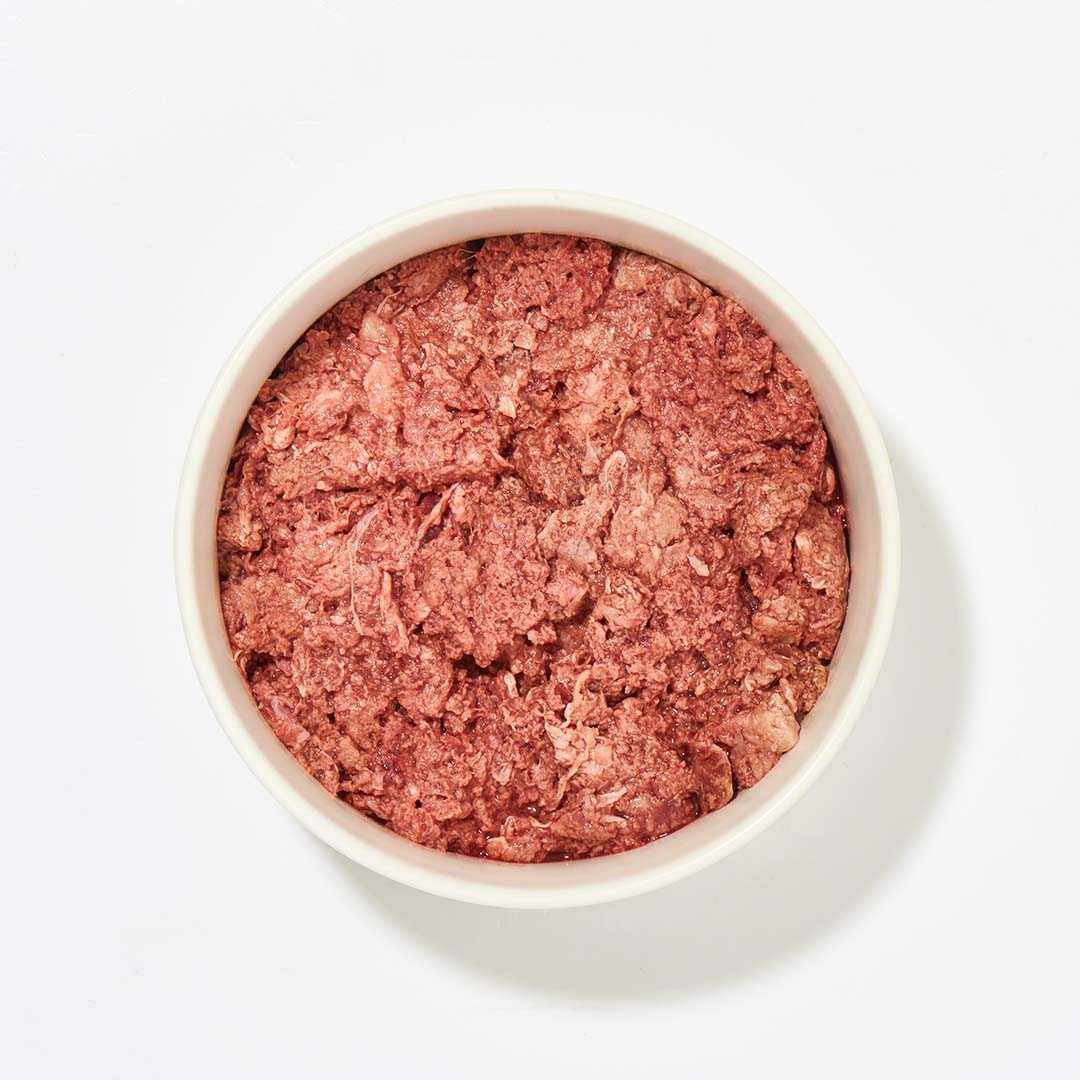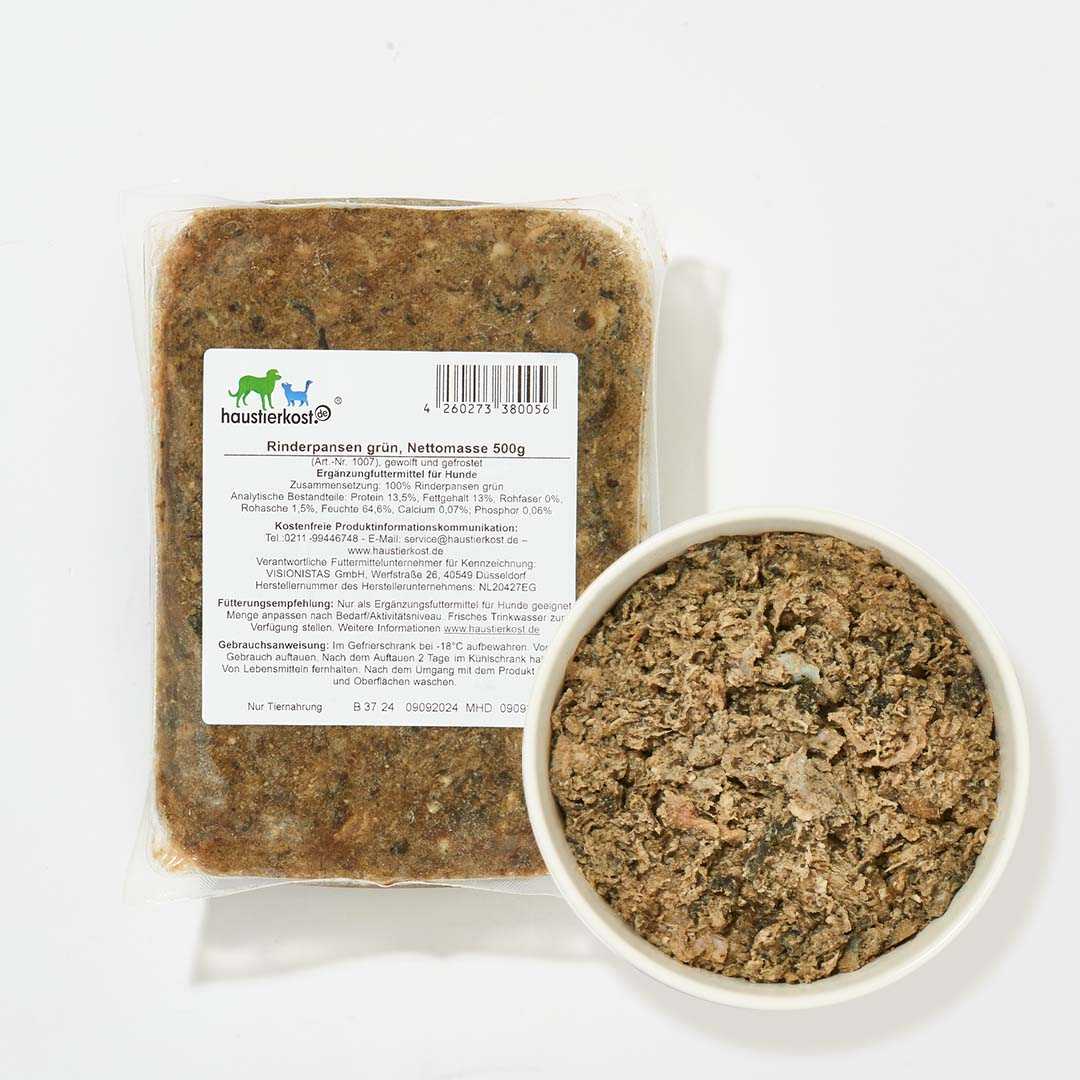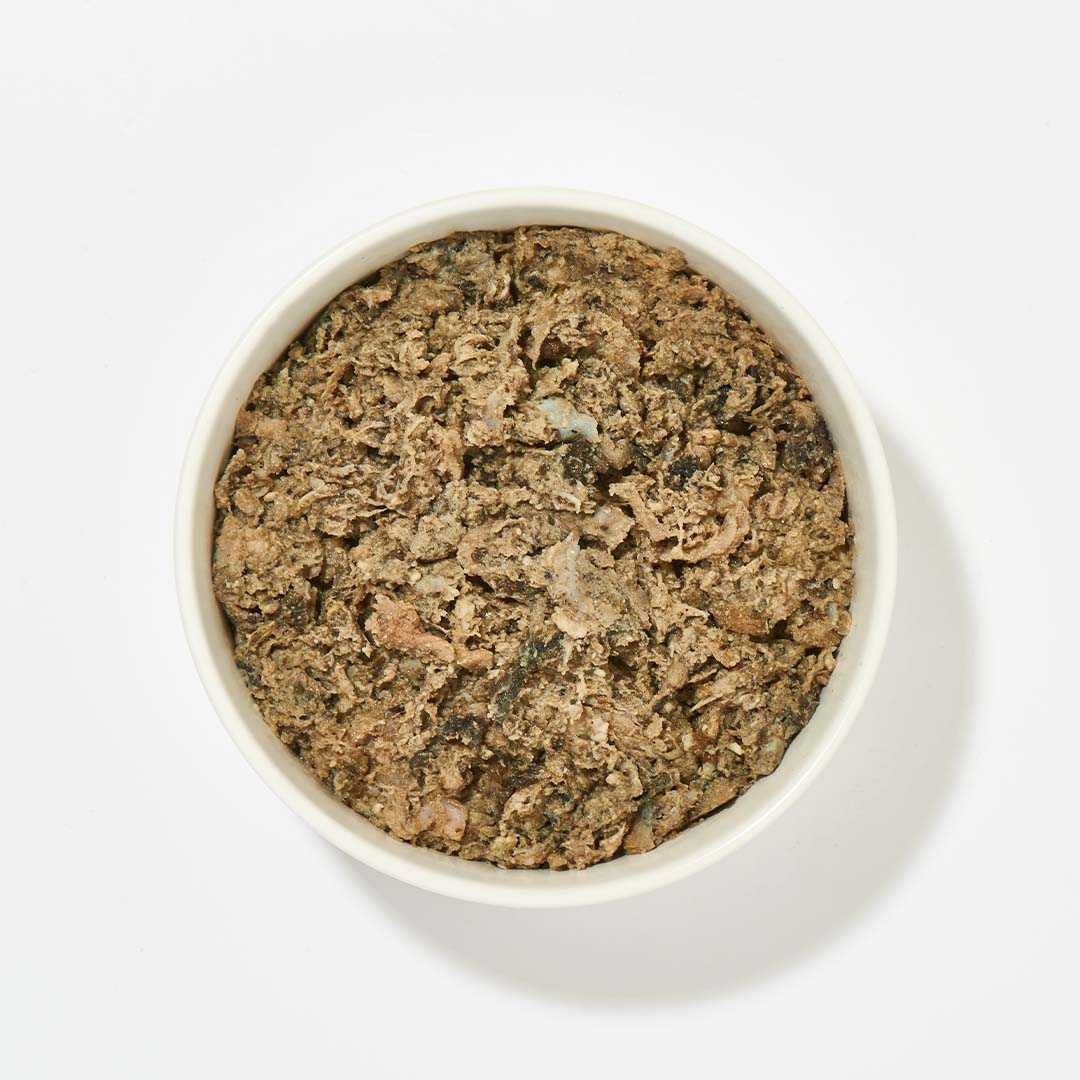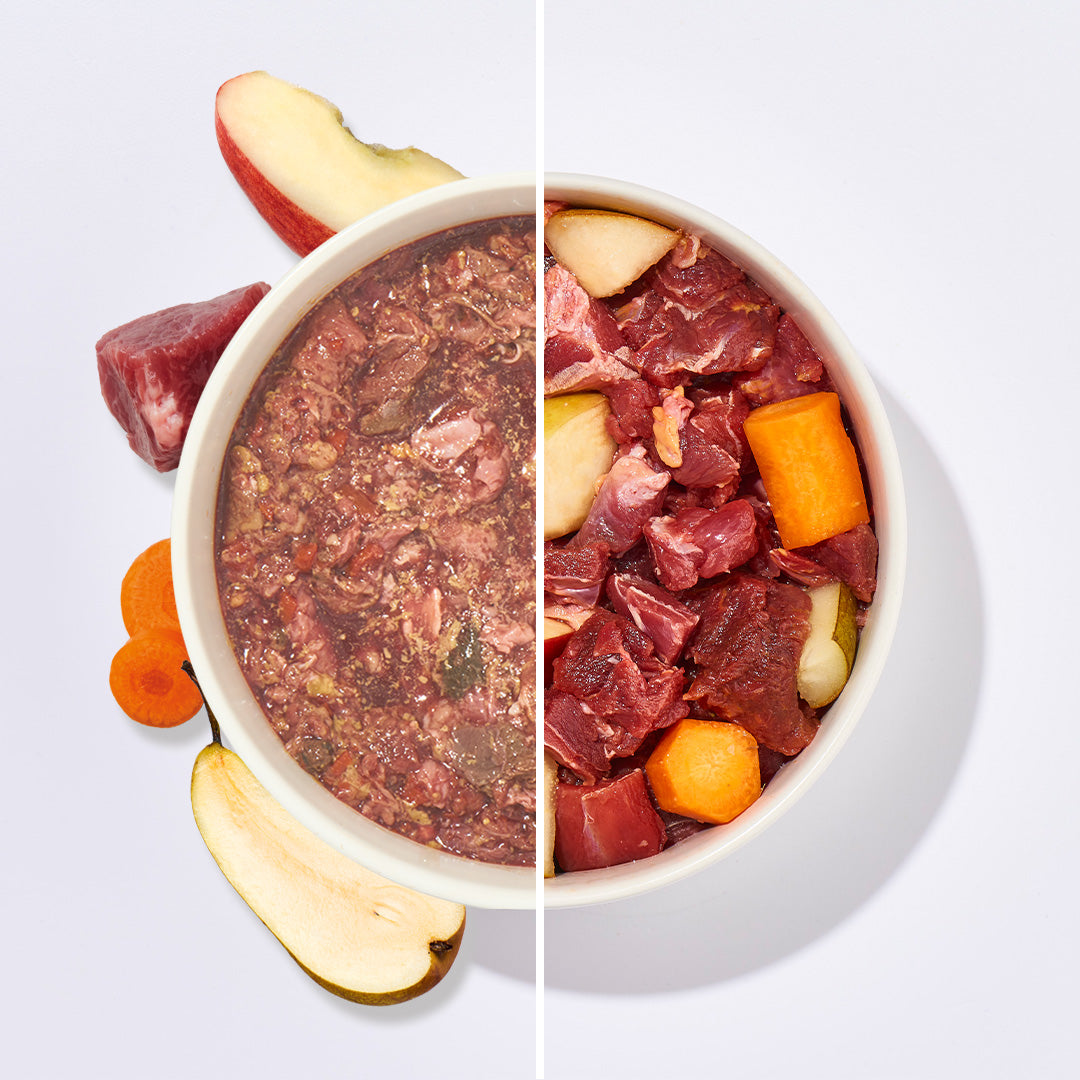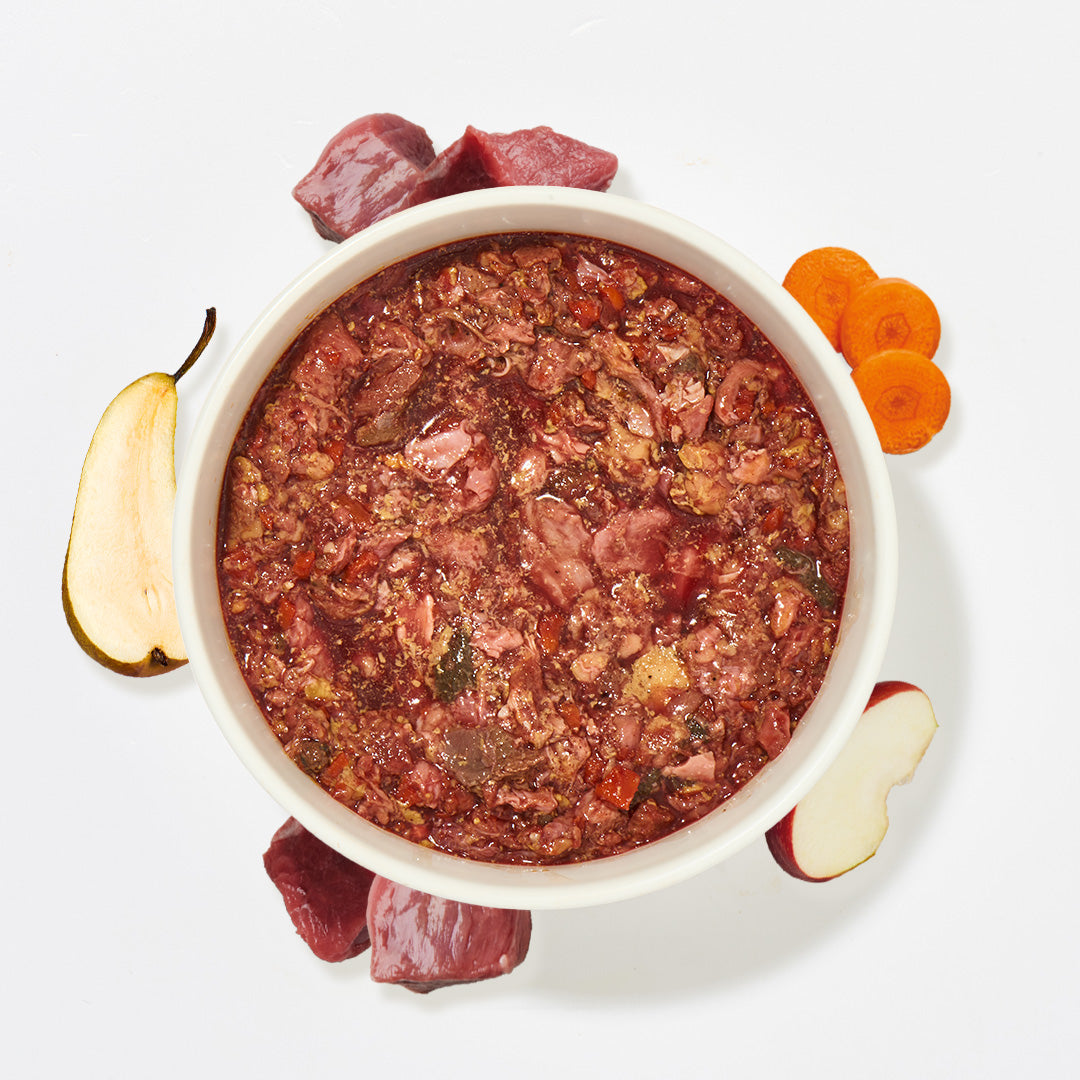Jerky for dogs and cats is often a popular snack because it is 100 percent meat and has a long shelf life and is easy to transport. Jerky is sometimes confused with freeze-dried meat, which is why in this post we highlight the differences between the two preparation methods.
Dried meat for dogs and cats: production and properties
Dried meat for dogs and cats is produced either by air drying or by heating the meat. Unlike dried meat for human consumption, dried meat for pets remains completely unseasoned and is therefore very natural in terms of ingredients and taste after drying.
At best, the dried meat for dogs and cats is air-dried - this is the most natural method, with which the important ingredients are best preserved. A compromise between speed and naturalness is offered by heating to up to 60 degrees. At even higher temperatures, the ingredients are gradually lost and the quality decreases.
Depending on which part of the animal and which technique was used, the dried meat pieces can have different sizes and degrees of hardness. This makes it very versatile for pet feeding. However, the dried meat cannot keep up with one property of freeze-dried meat - the long drying time in the air or with heat changes the cell structures so permanently that the dried meat does not return to its original shape even when water is added.
Freeze-dried meat
Freeze-dried meat for dogs and cats is produced in the exact opposite way to dried meat, as it is subjected to a different process: the meat is first deep-frozen and then treated in a vacuum chamber at a slight negative pressure. This causes the frozen water in the meat to evaporate without turning into a liquid state, meaning that one state of matter is skipped. This is very gentle and ensures that the cell structure of the meat is preserved, unlike dried meat. The freeze-dried meat is therefore suitable for later feeding in the dried state or for soaking in lukewarm water. This allows water to enter the cells again and the meat regains its original shape. This also makes it very flexible when it comes to feeding.
Since water makes up the majority of the weight of meat, freeze-dried meat also contains a lot of ingredients at a relatively low weight. In general, it can be said that 10 grams of freeze-dried meat is equivalent to about 40 grams of fresh meat. The freeze-dried meat can be used as a main meal both in the dried and soaked state. If it is fed in the dried state, a bowl of fresh water should always be available to replace the water not contained in the meat.
Which is better: dried meat or freeze-dried meat for dogs and cats?
Dried meat is mainly used as a snack for cats and dogs, while freeze-dried meat can be used as a snack or reward as well as a main meal thanks to its special production process. Freeze-dried meat is also easy to transport and is therefore a real alternative to the classic BARF diet when on holiday with your dog.
While freeze-dried meat scores points for its versatility, no general statement can be made about taste. Both drying alternatives aim to preserve the taste as best as possible. So if you have the opportunity, try both variants for your dog or cat. Especially if freeze-dried meat is to be used as a BARF alternative for cats and dogs on vacation, it is important that the animal is accustomed to the food in advance.
In our BARF shop you will find a wide selection of dried meat for dogs and cats as well as freeze-dried meat from many different animals - including horses and exotic animals such as ostriches. This means that animals with food allergies can also enjoy the freeze-dried meat.
